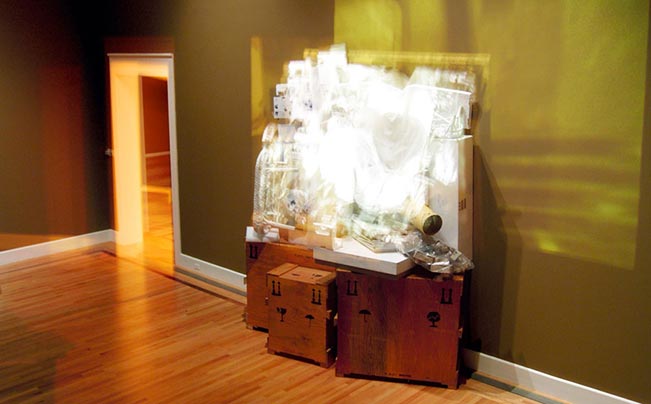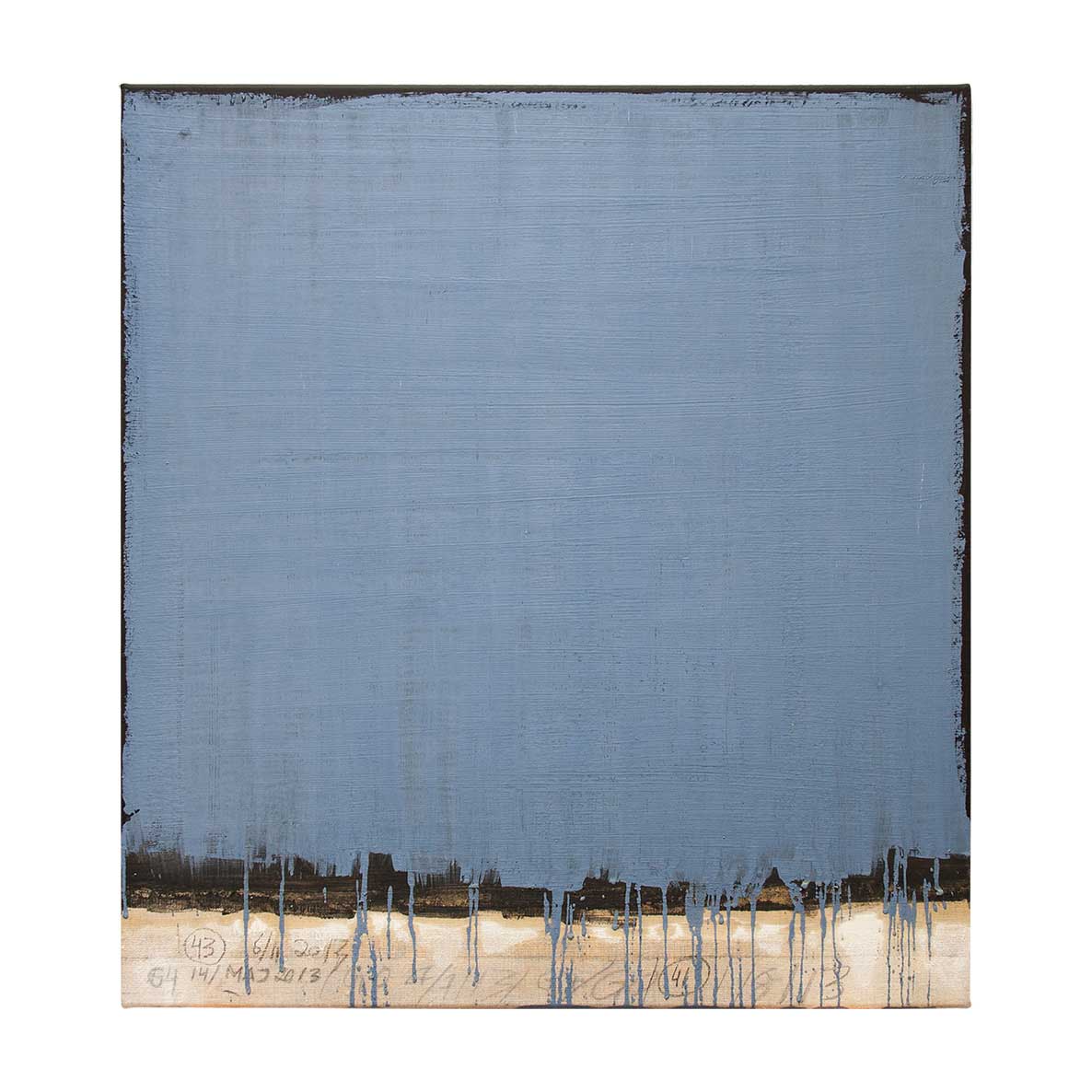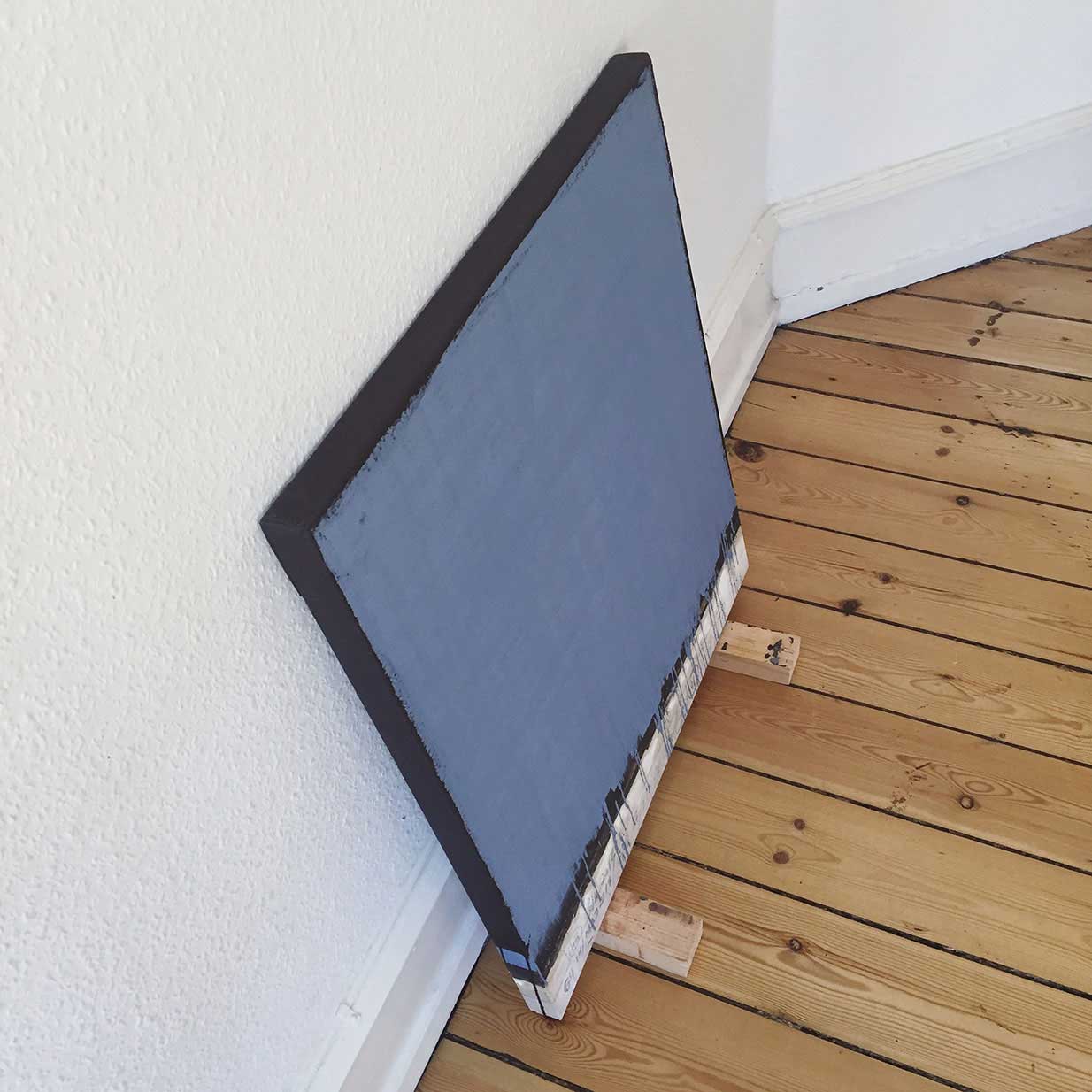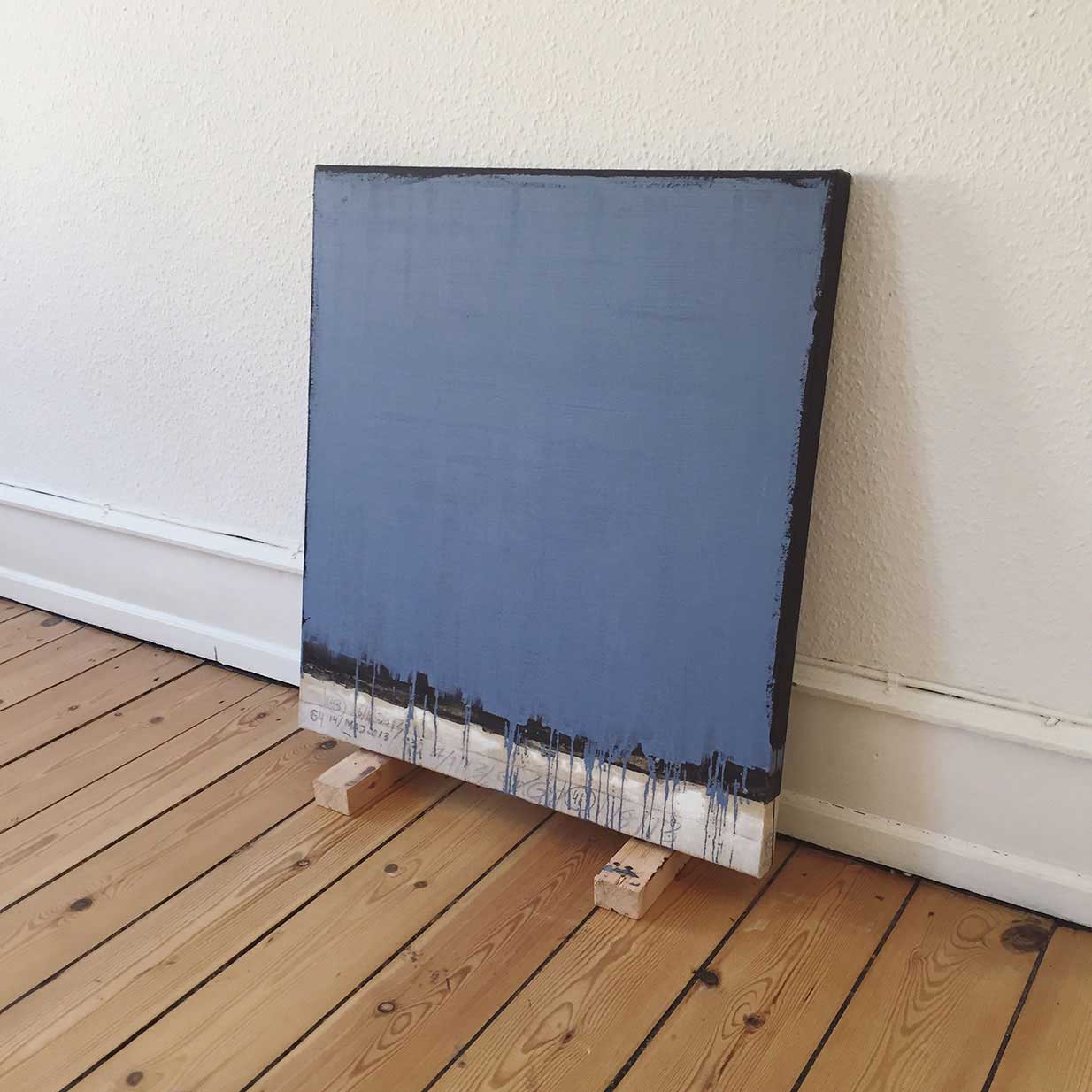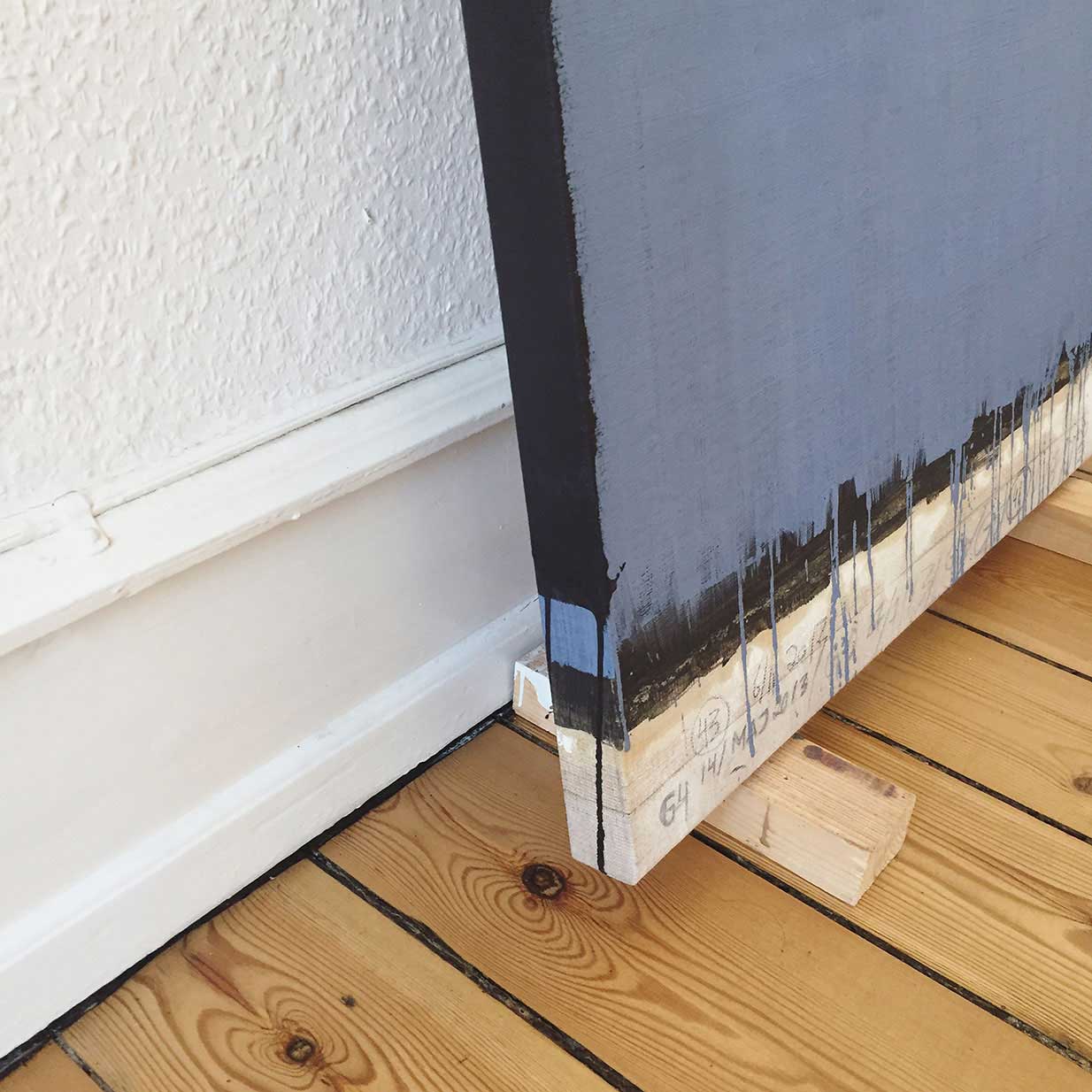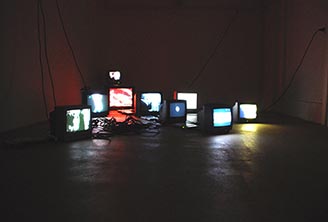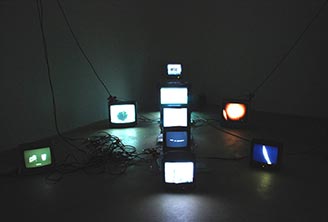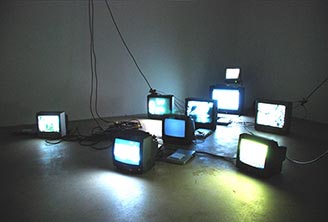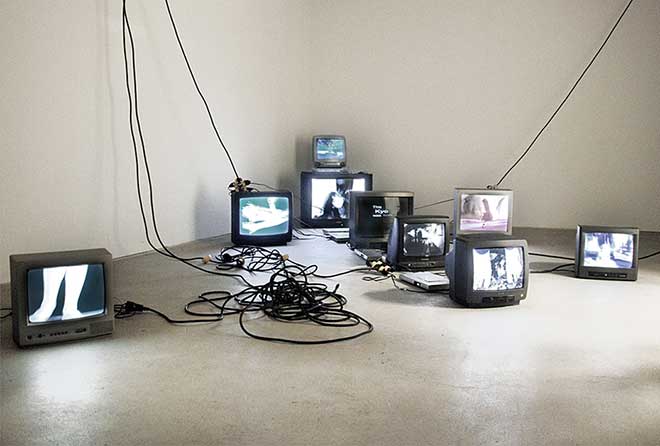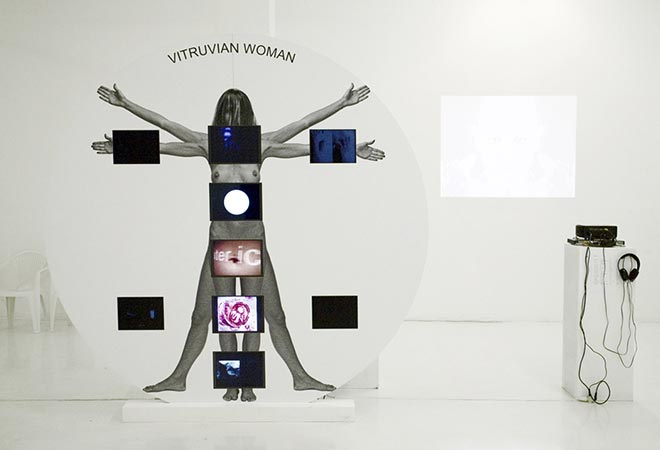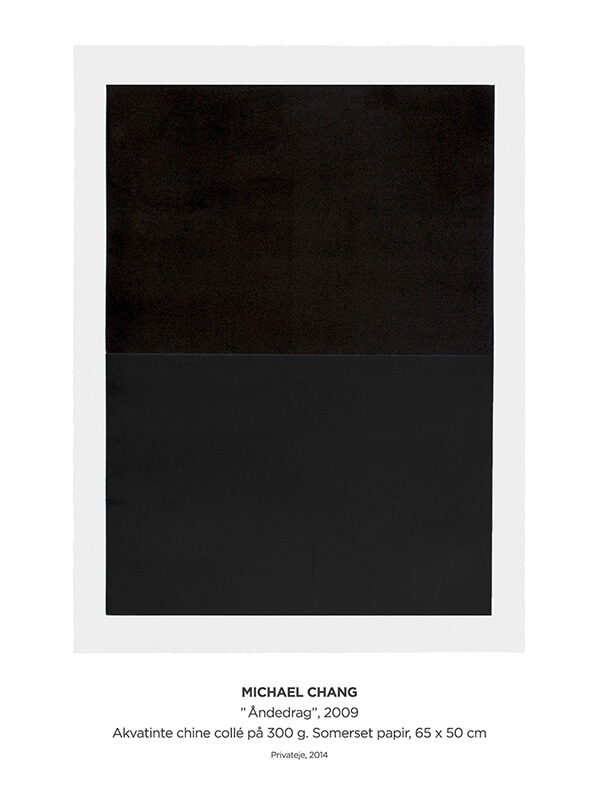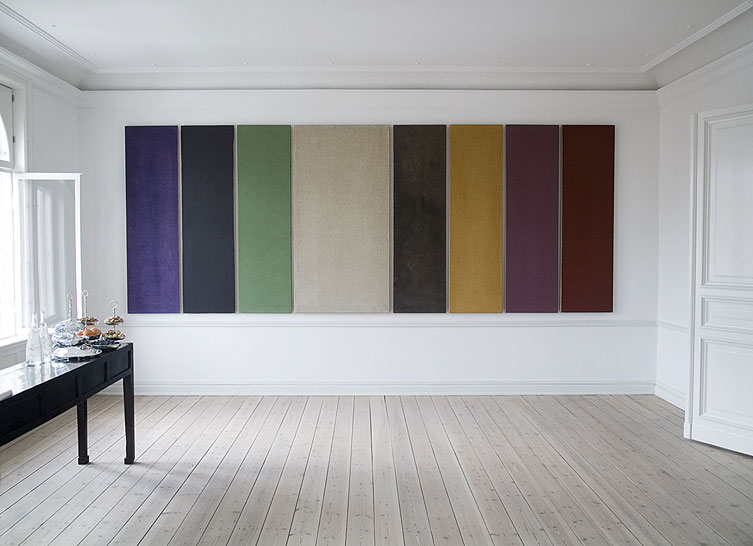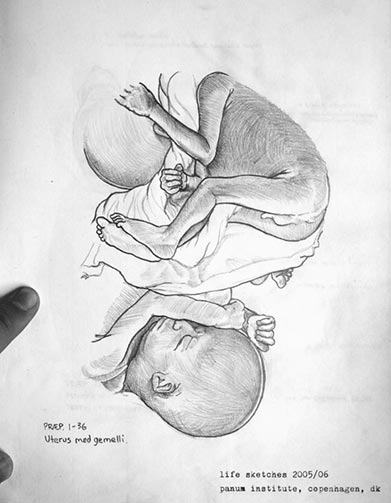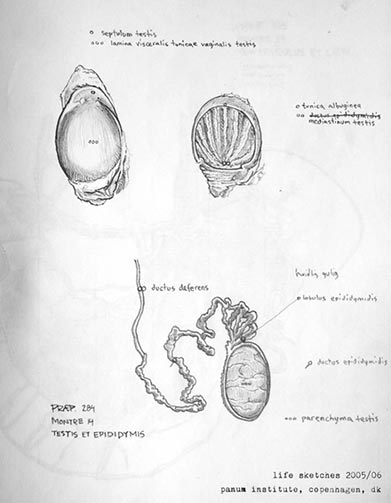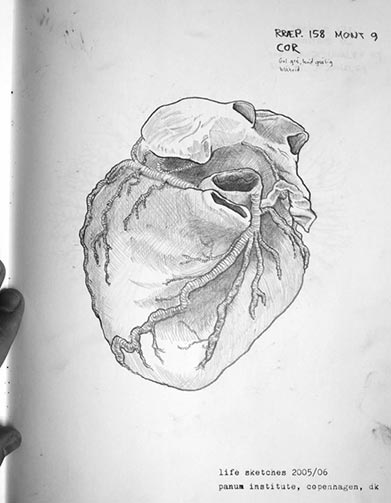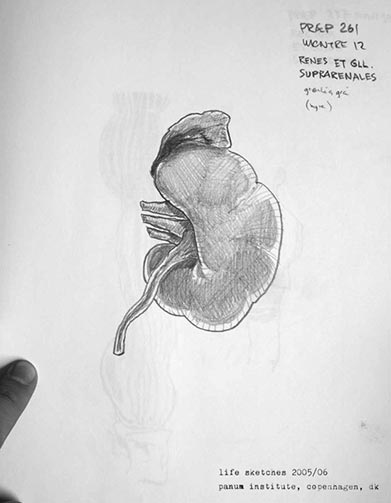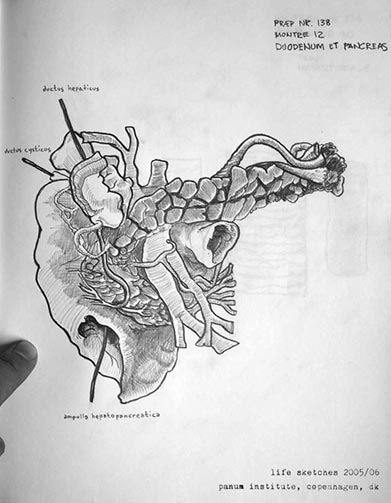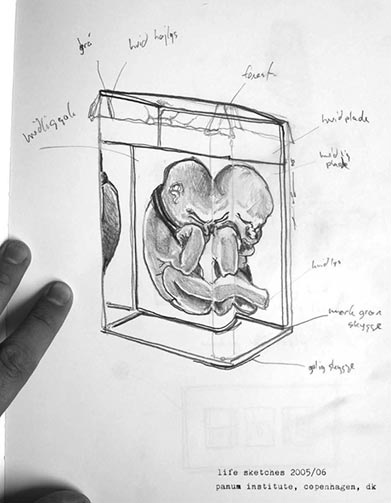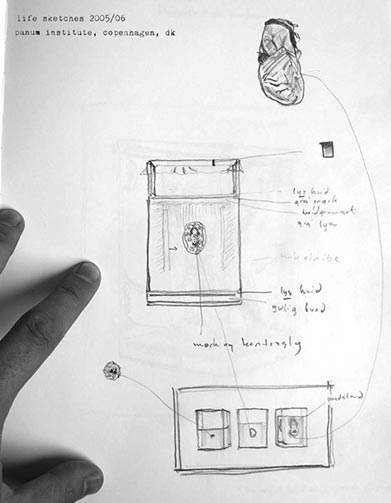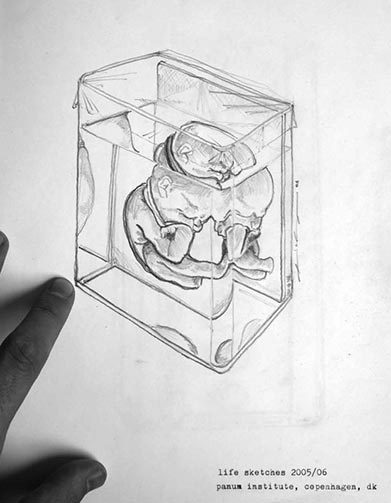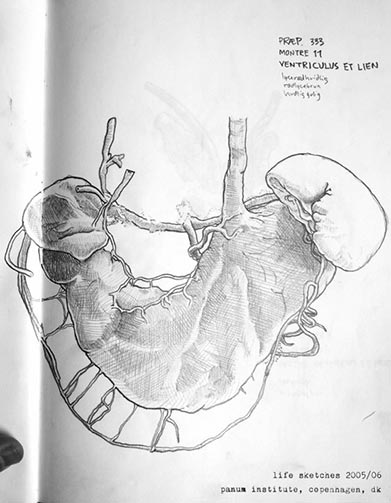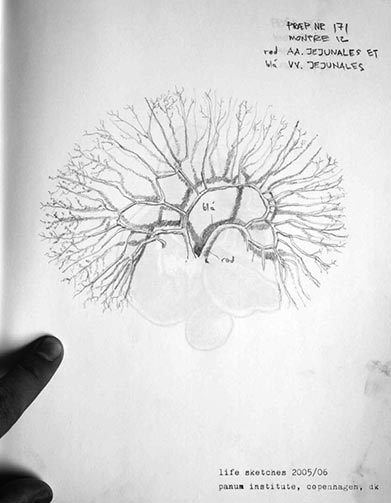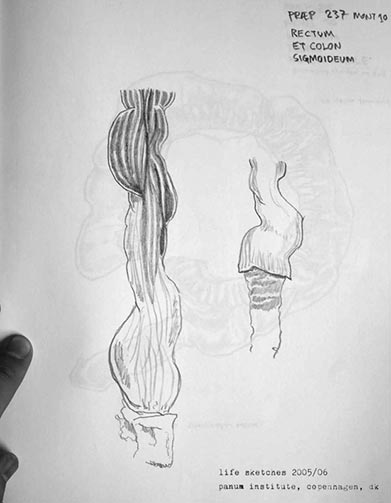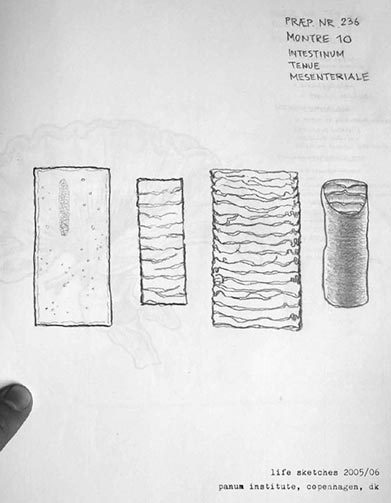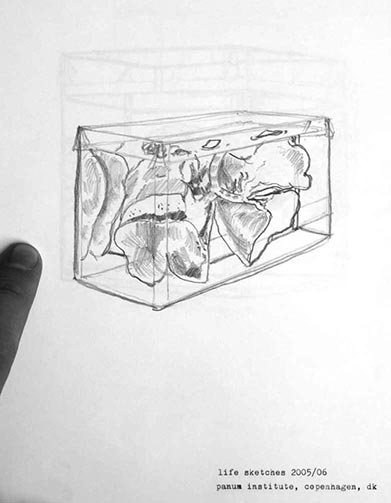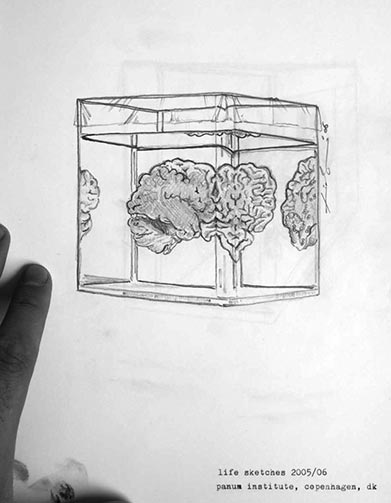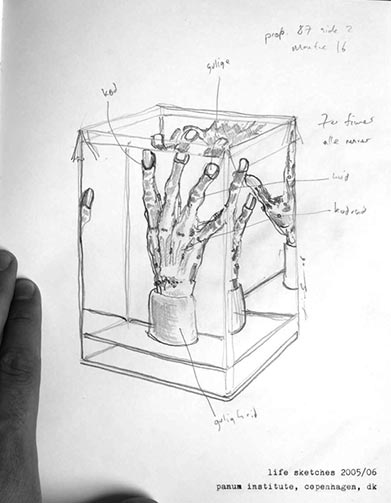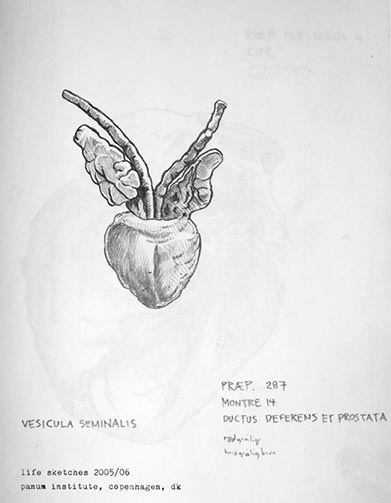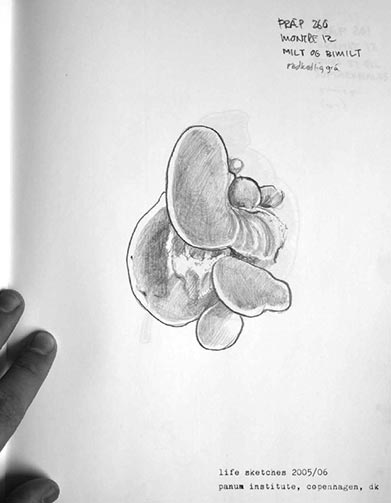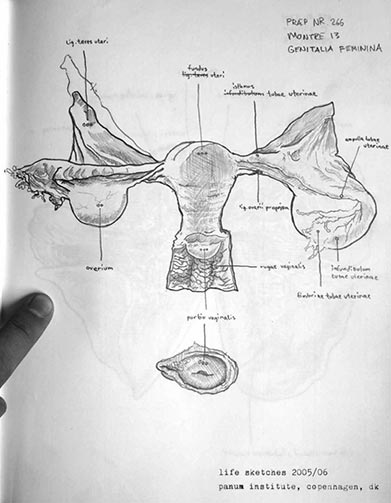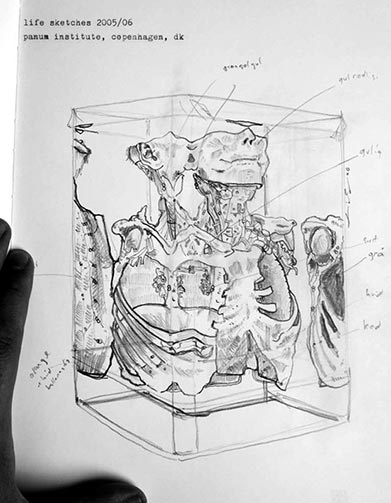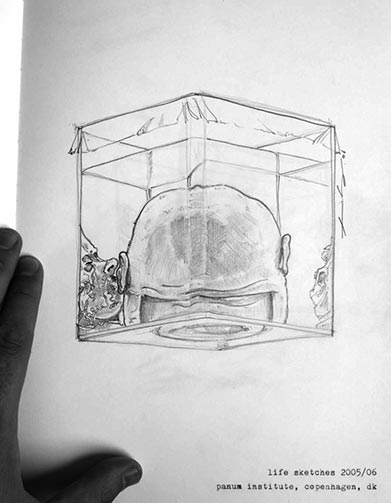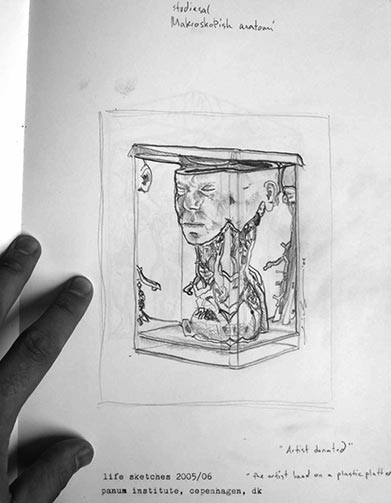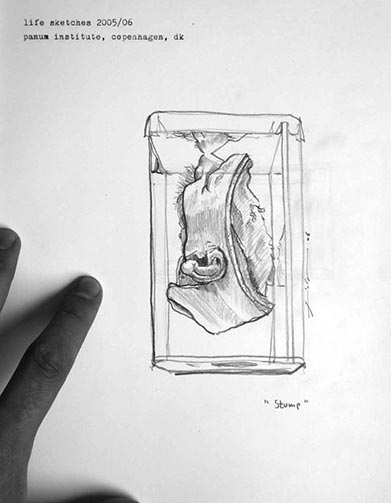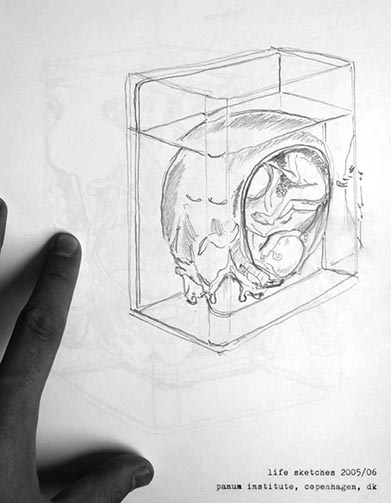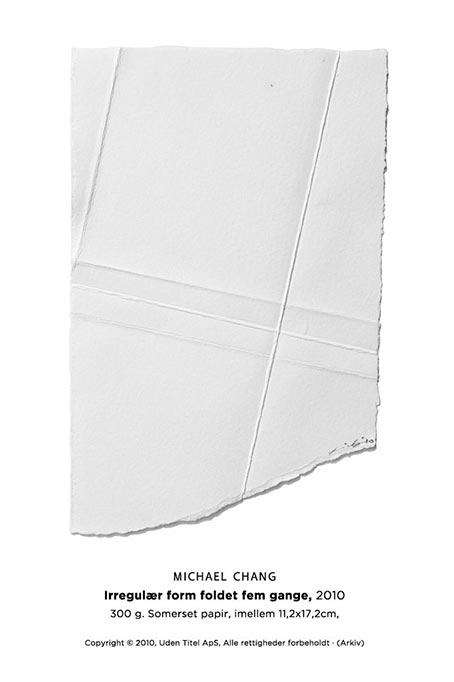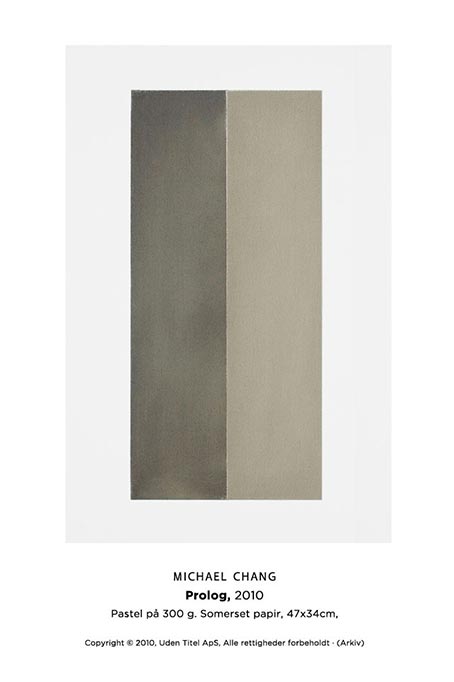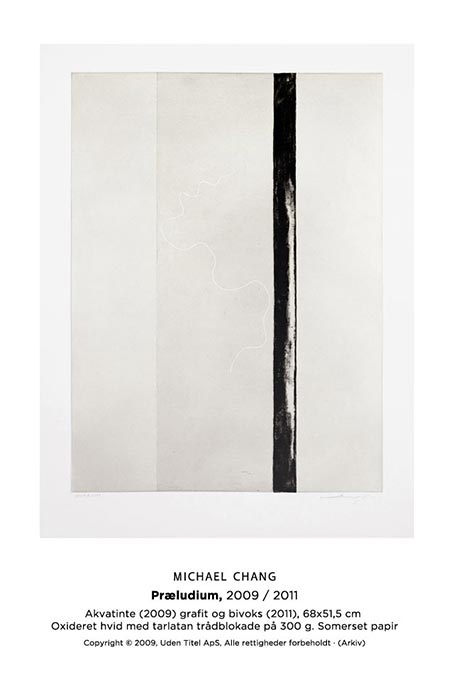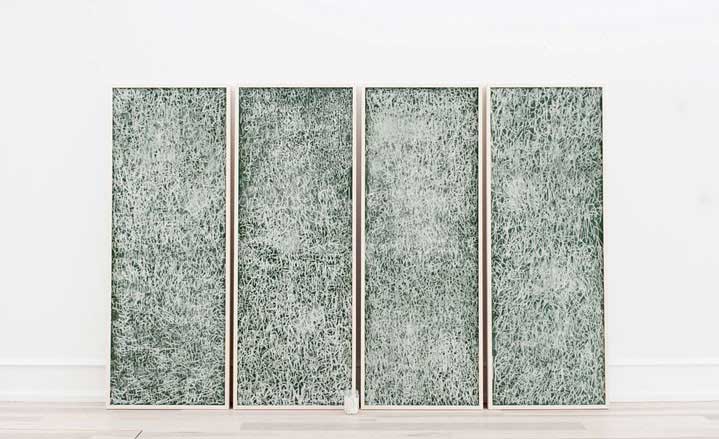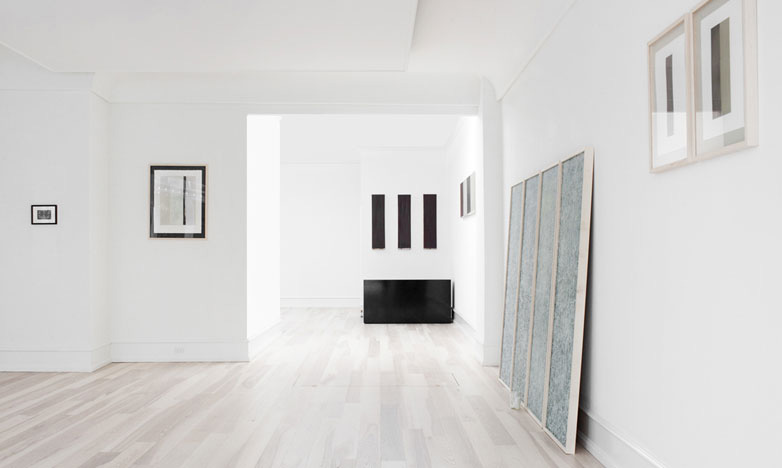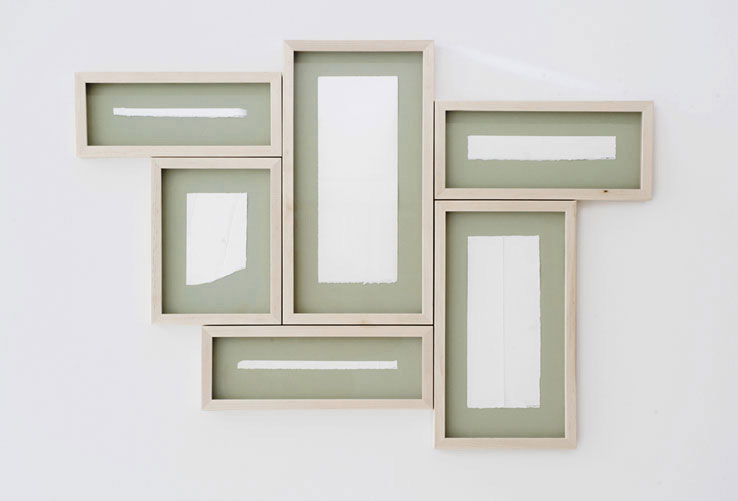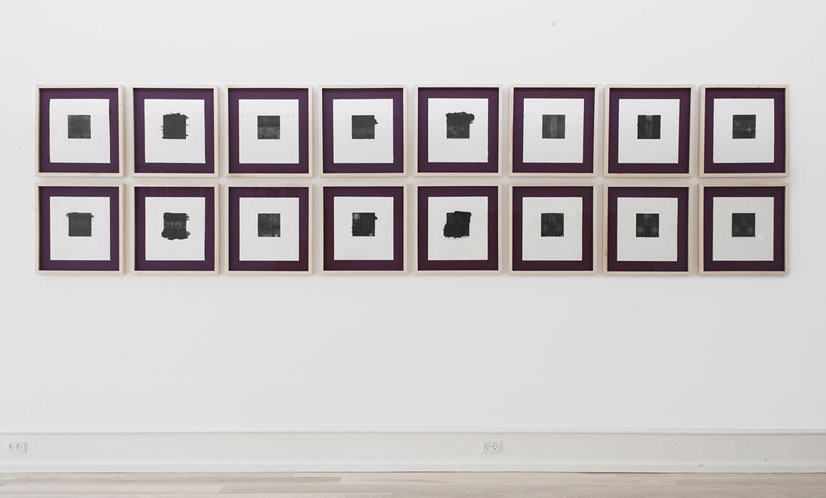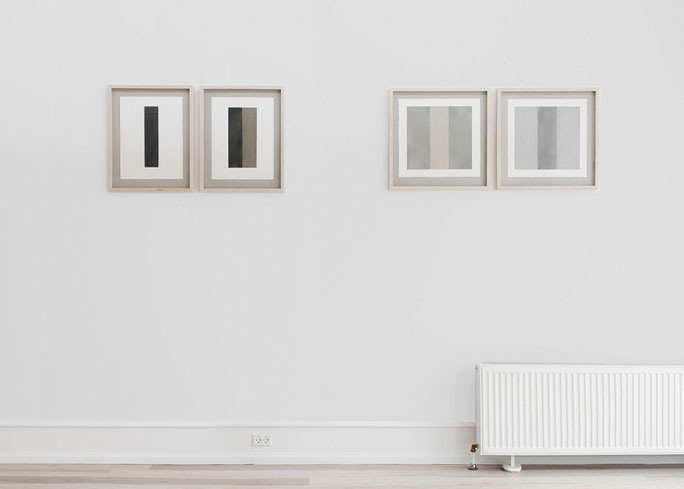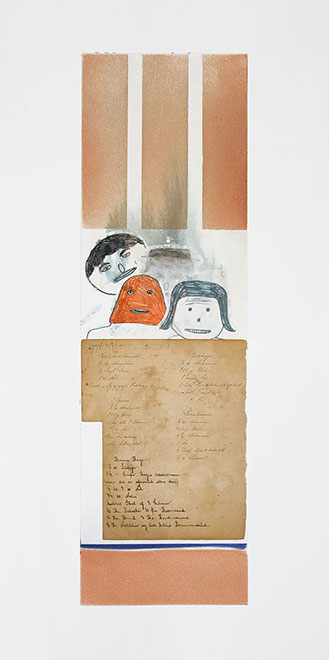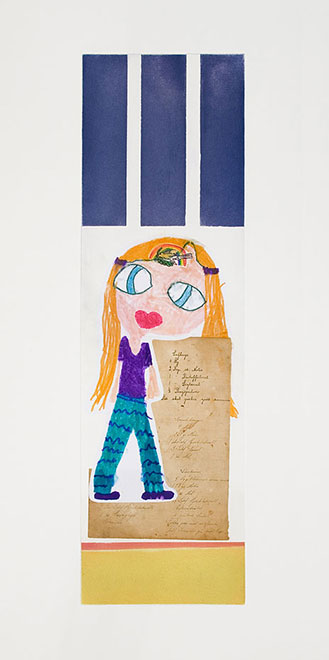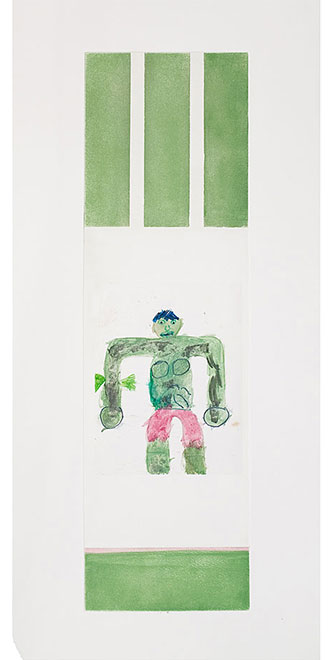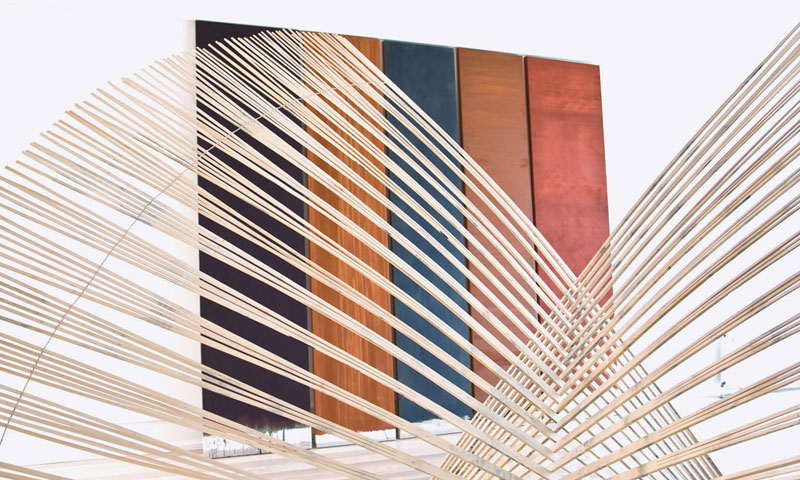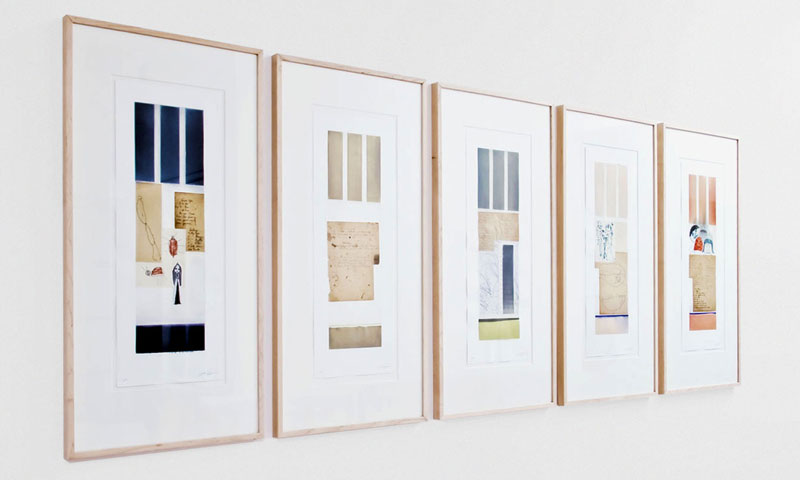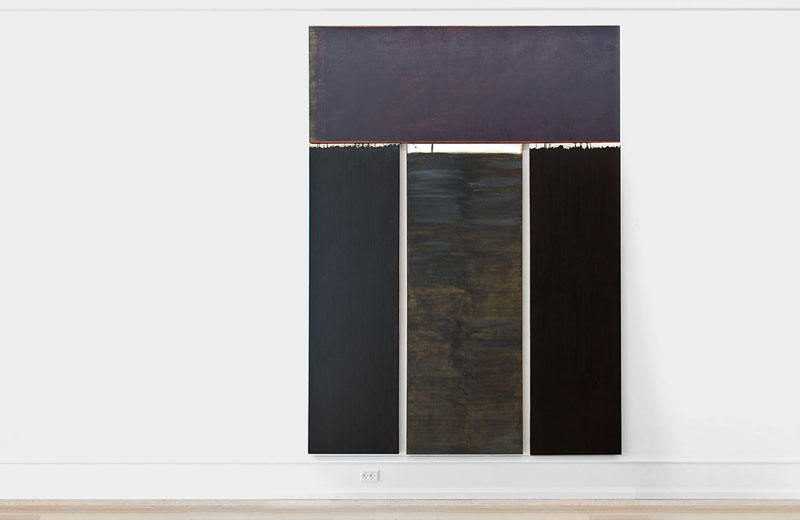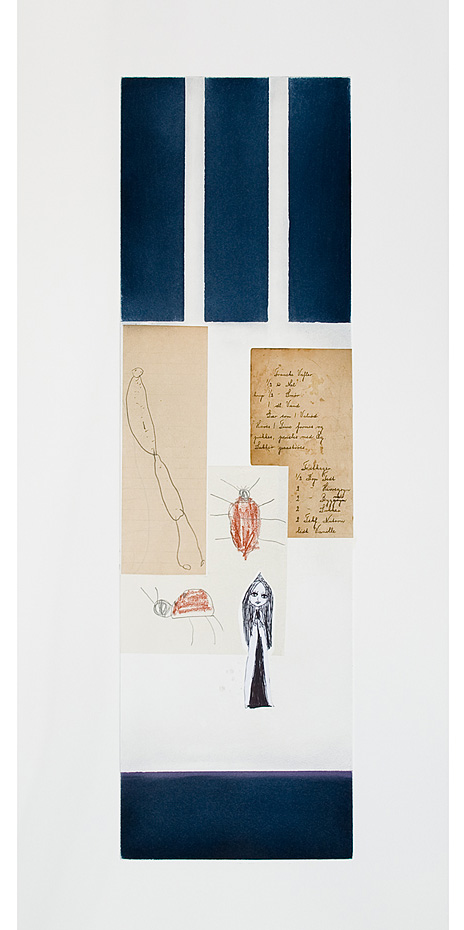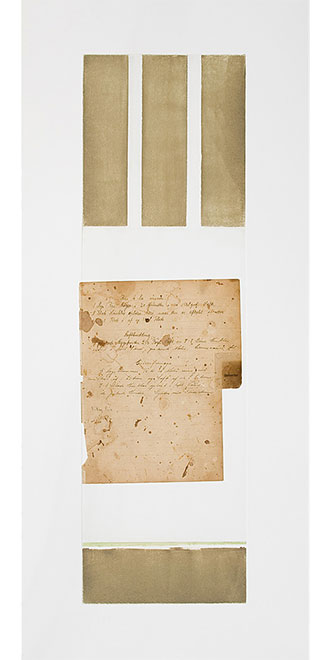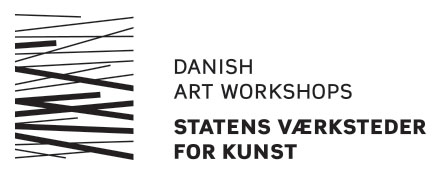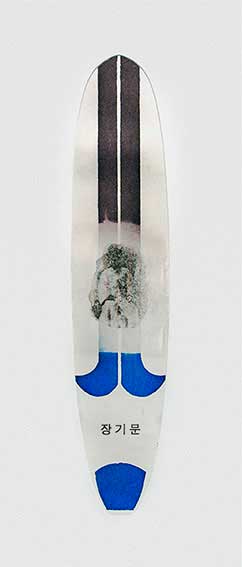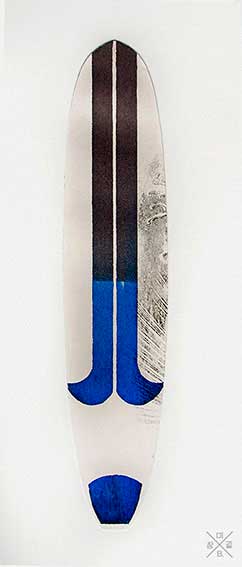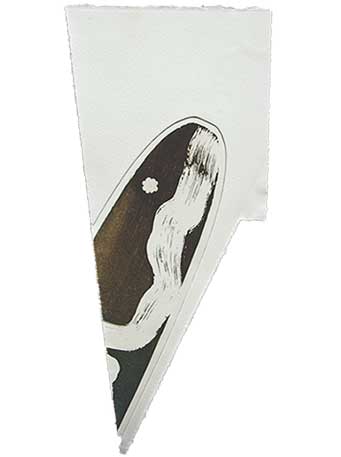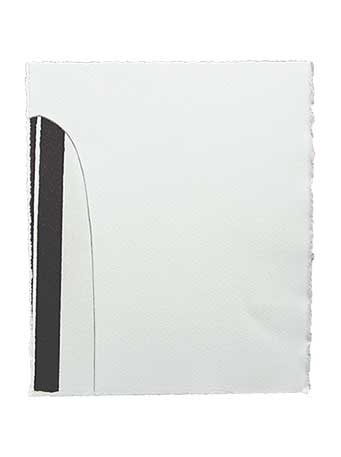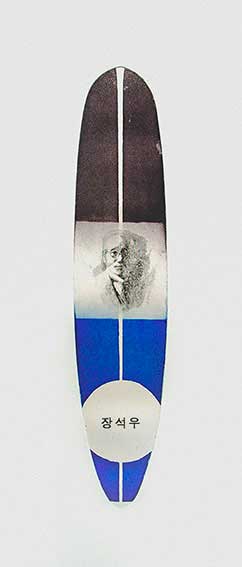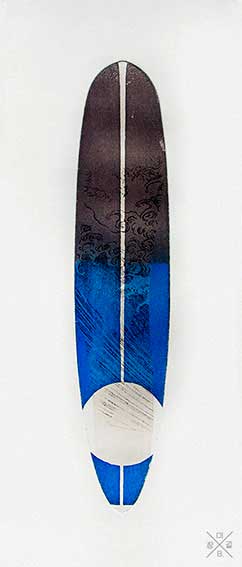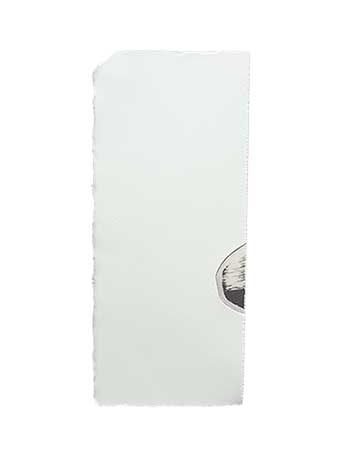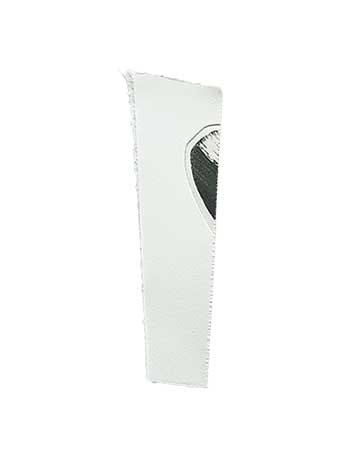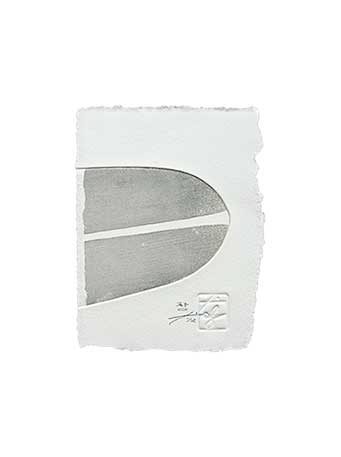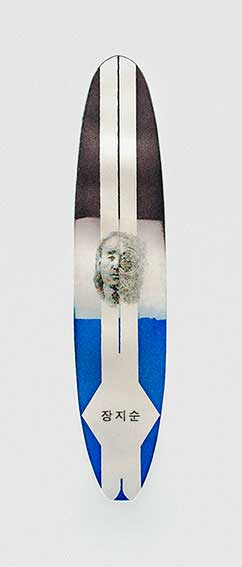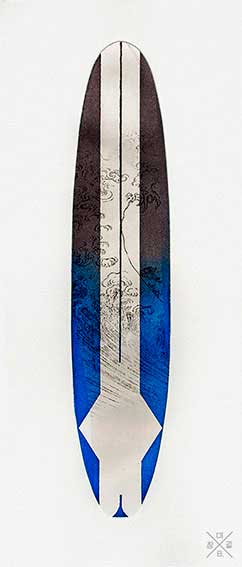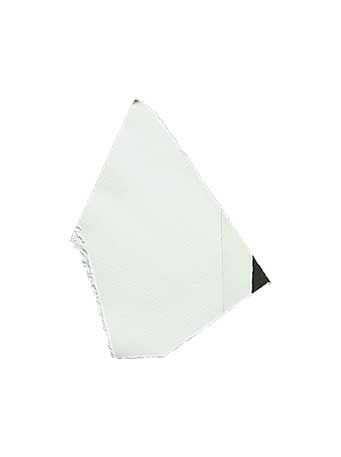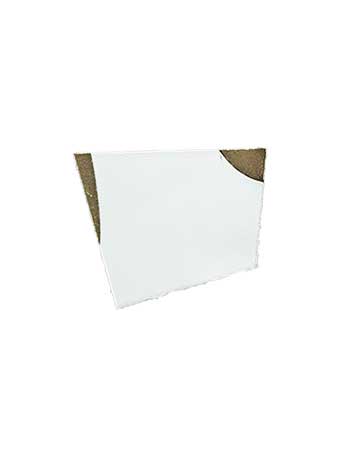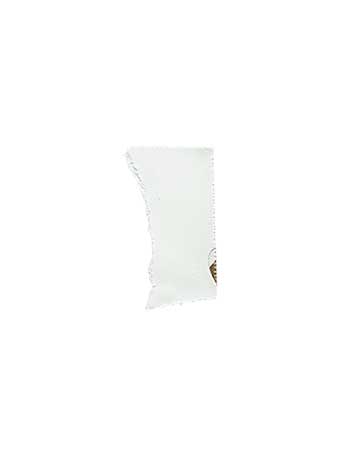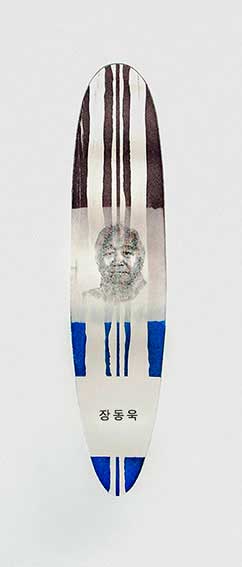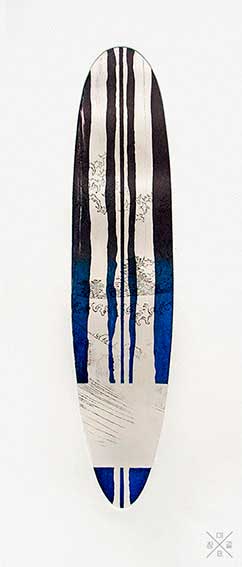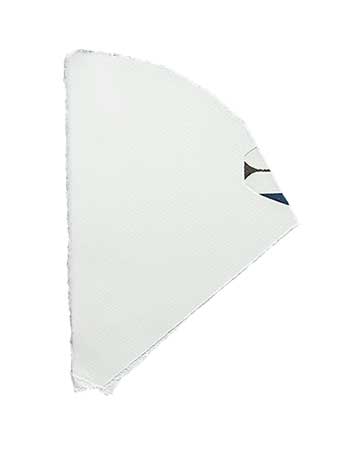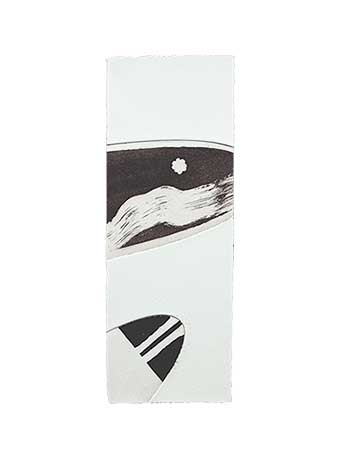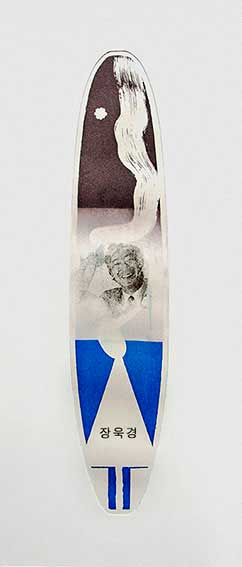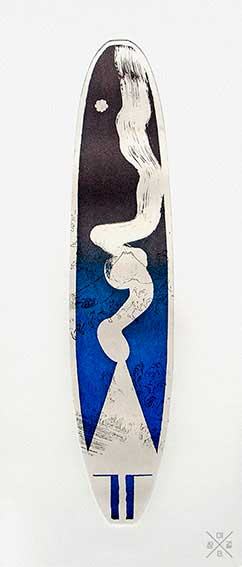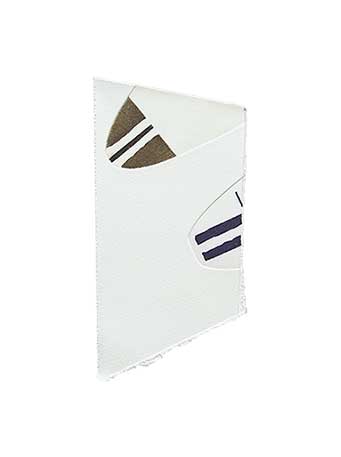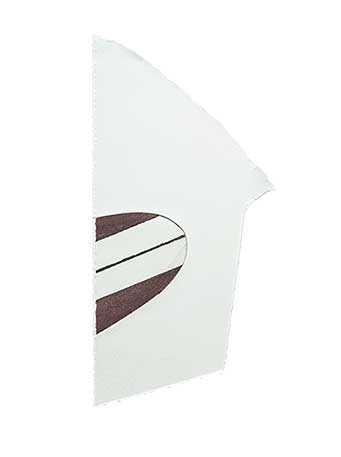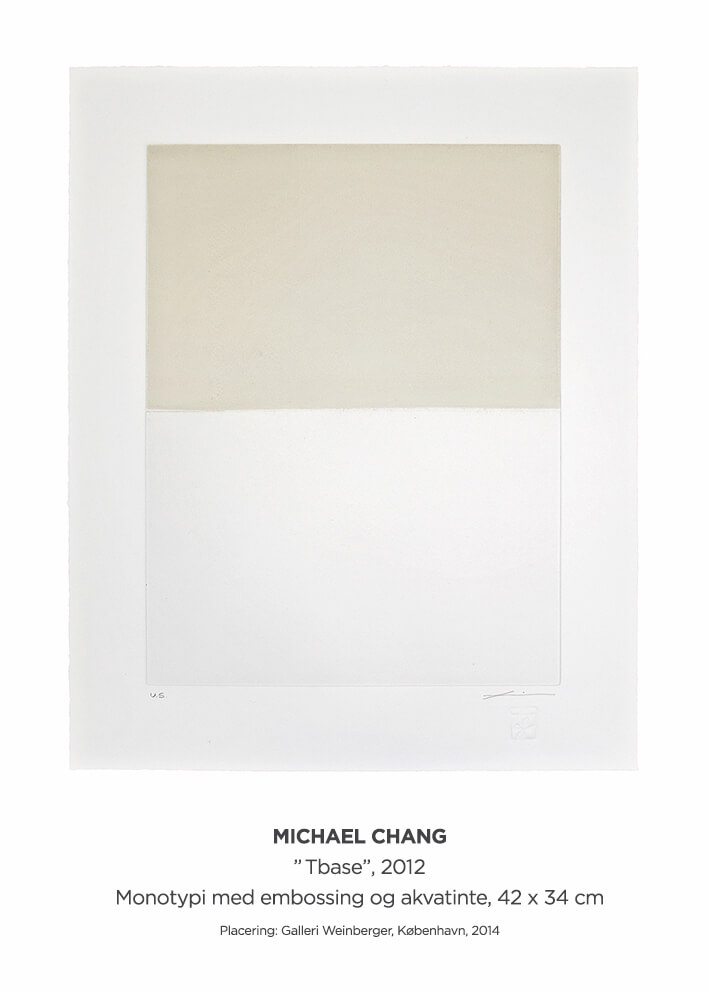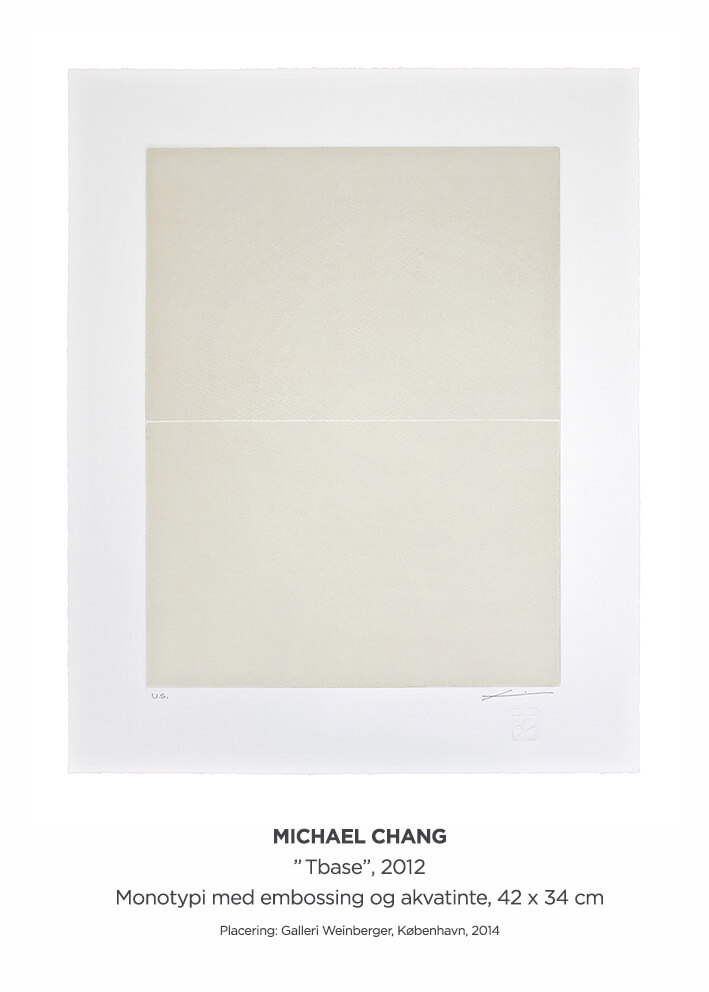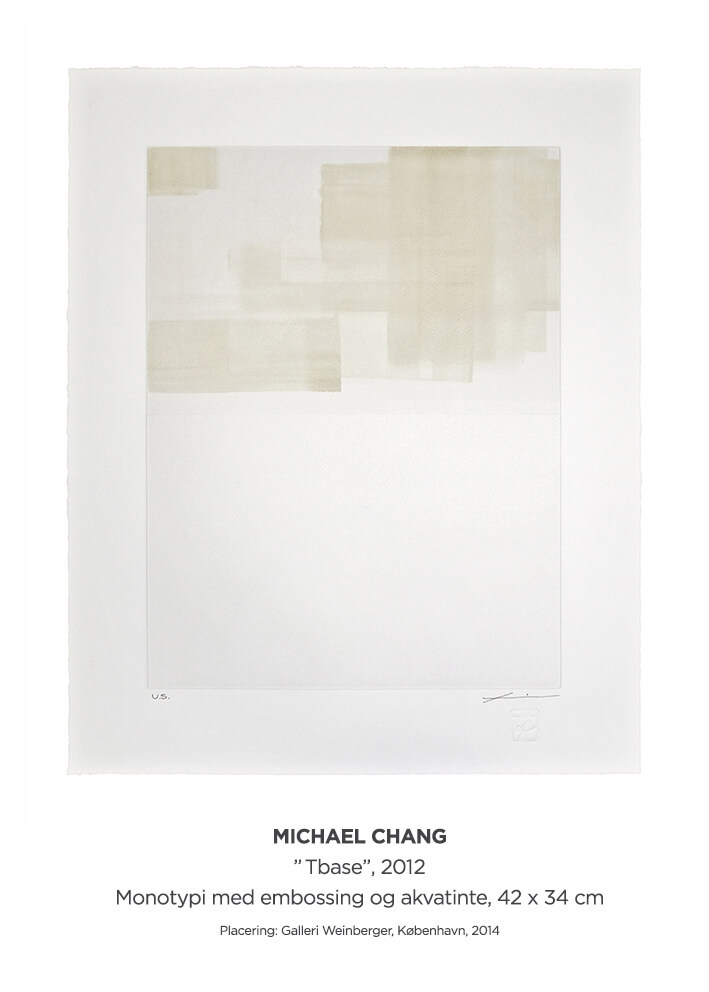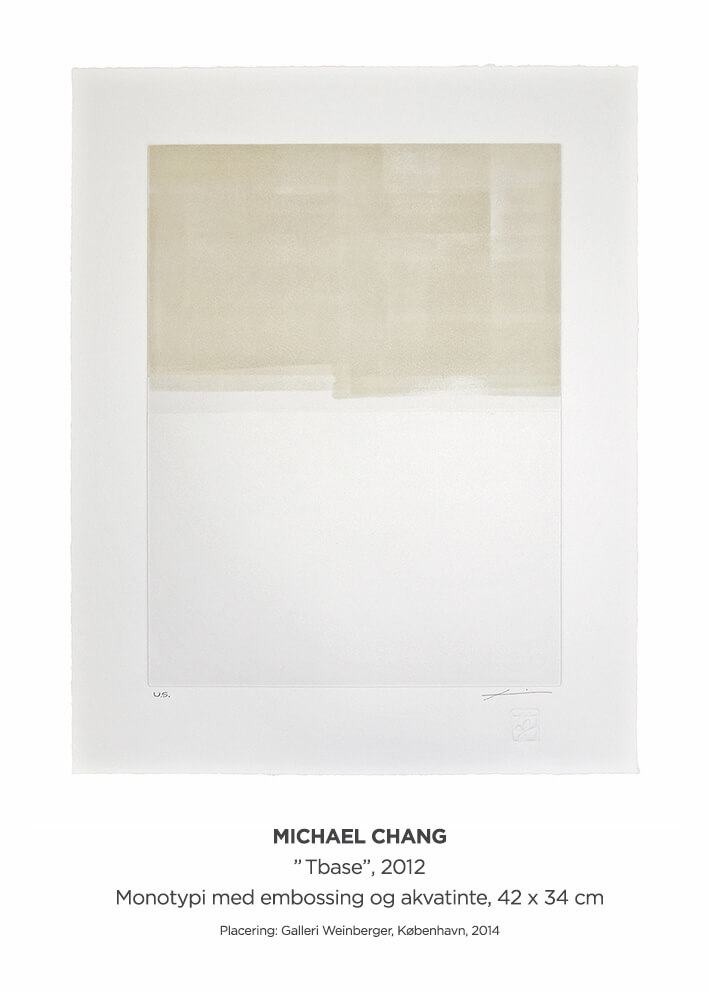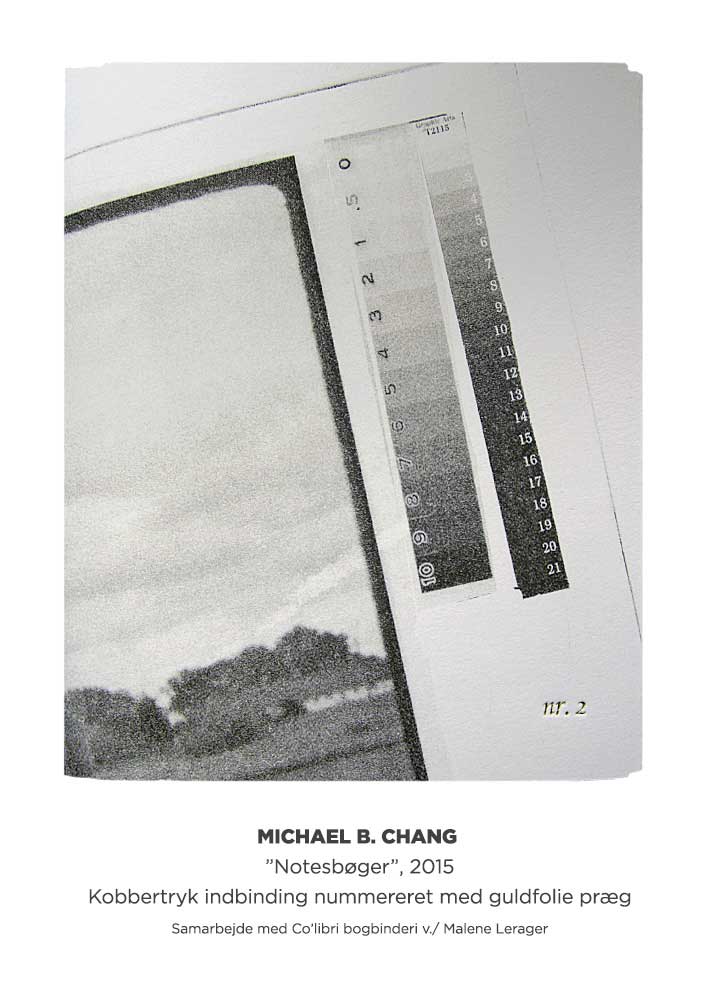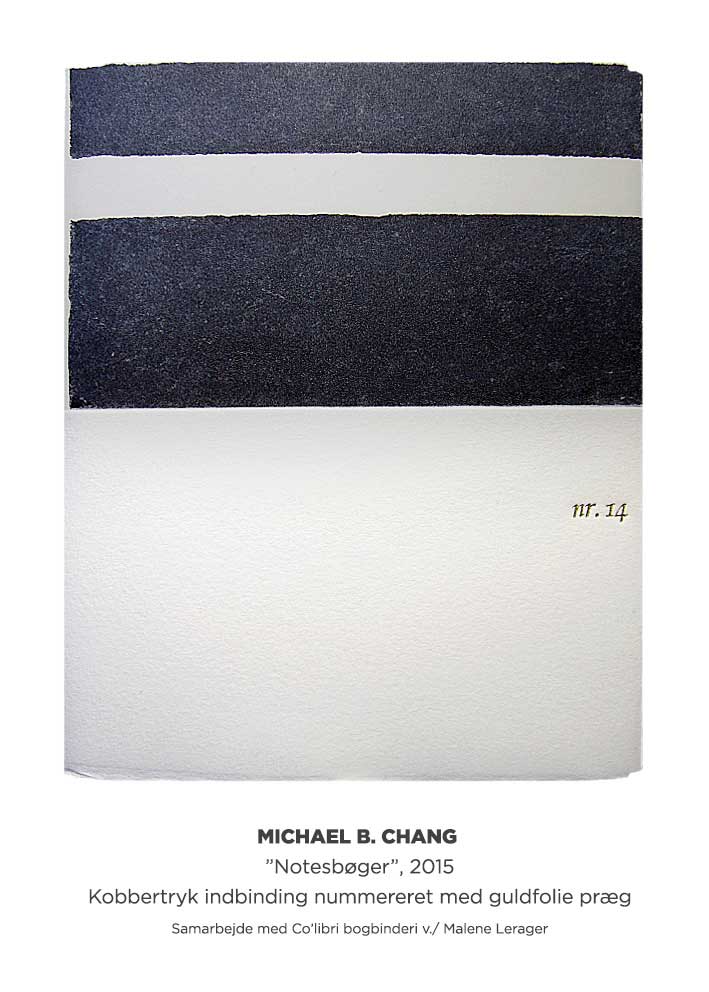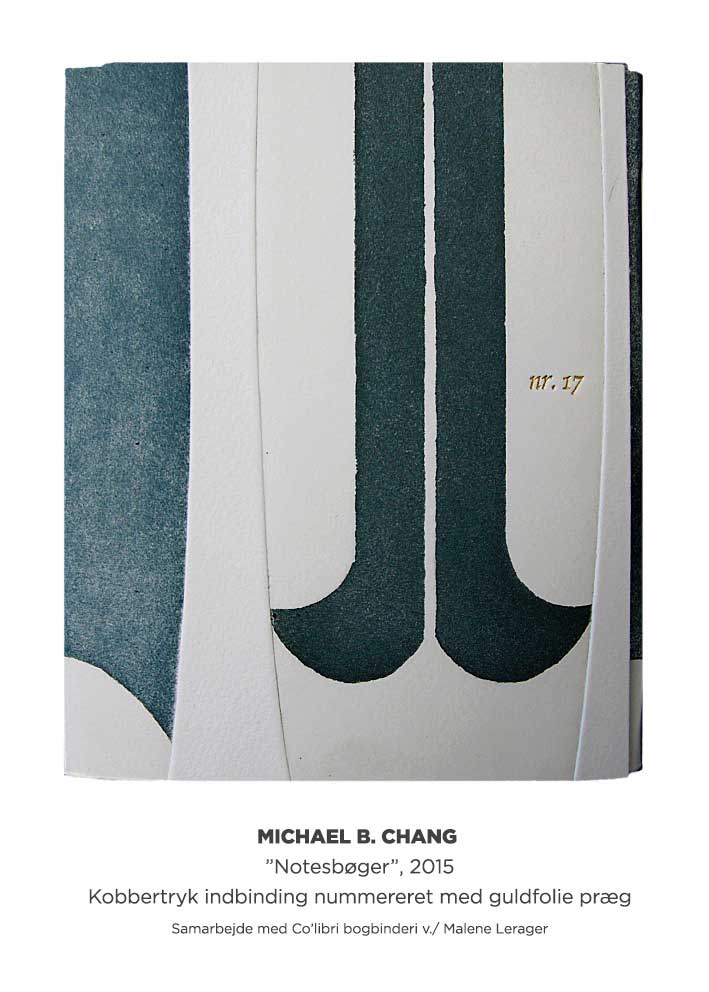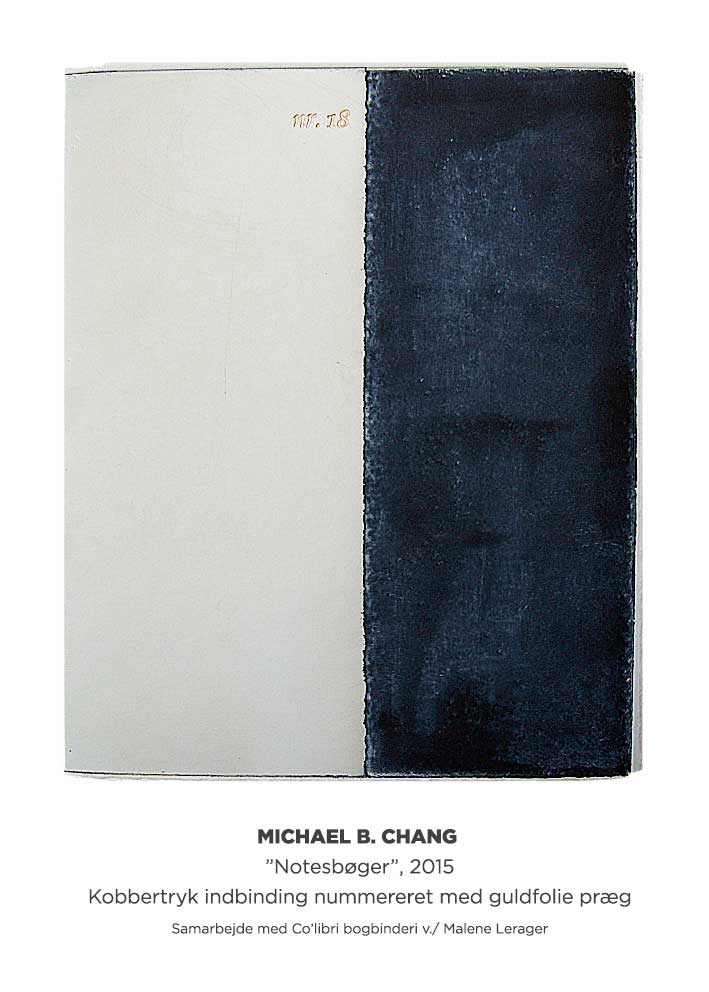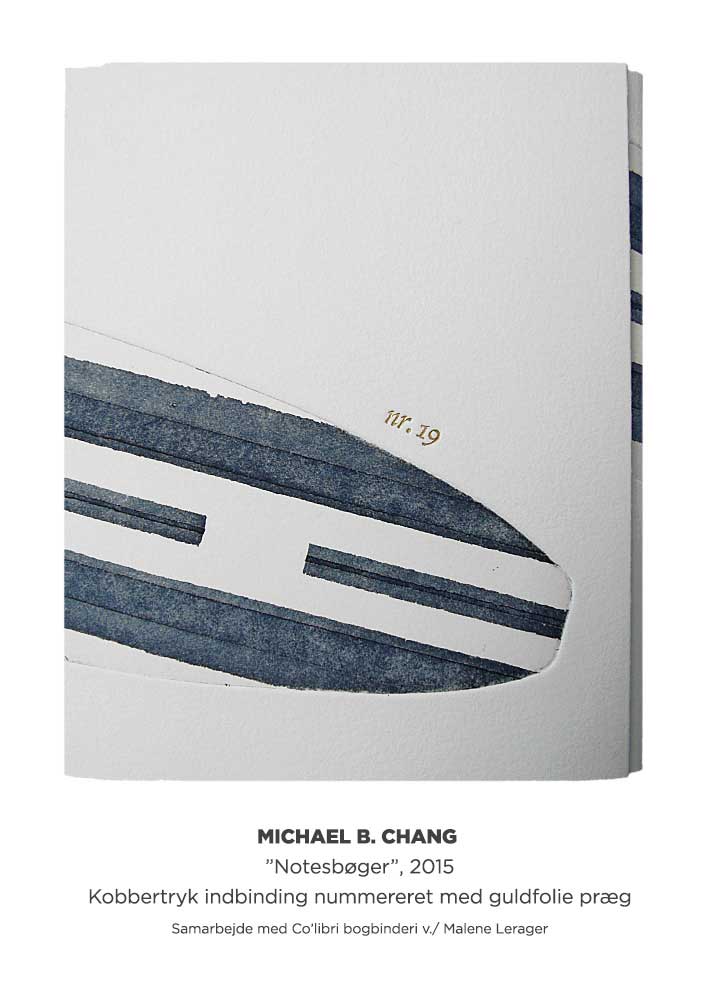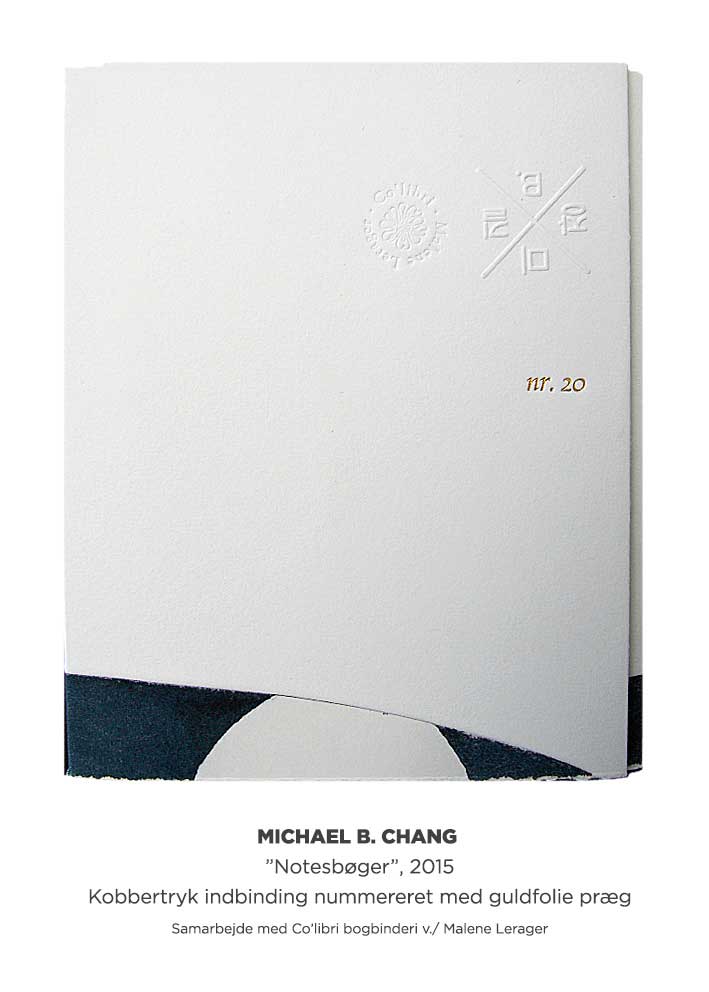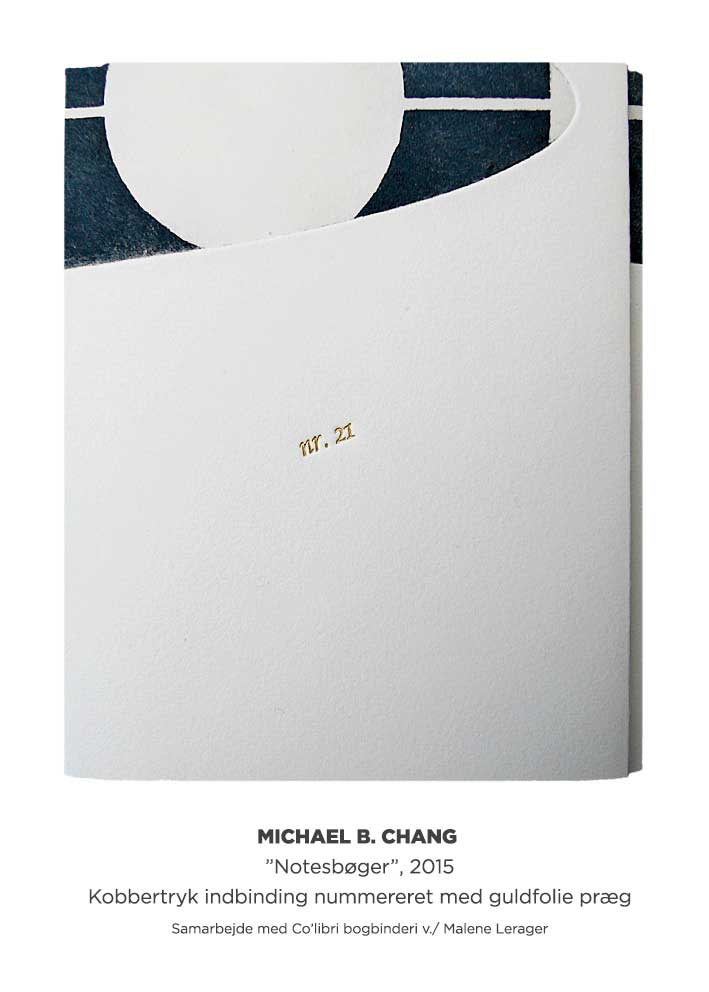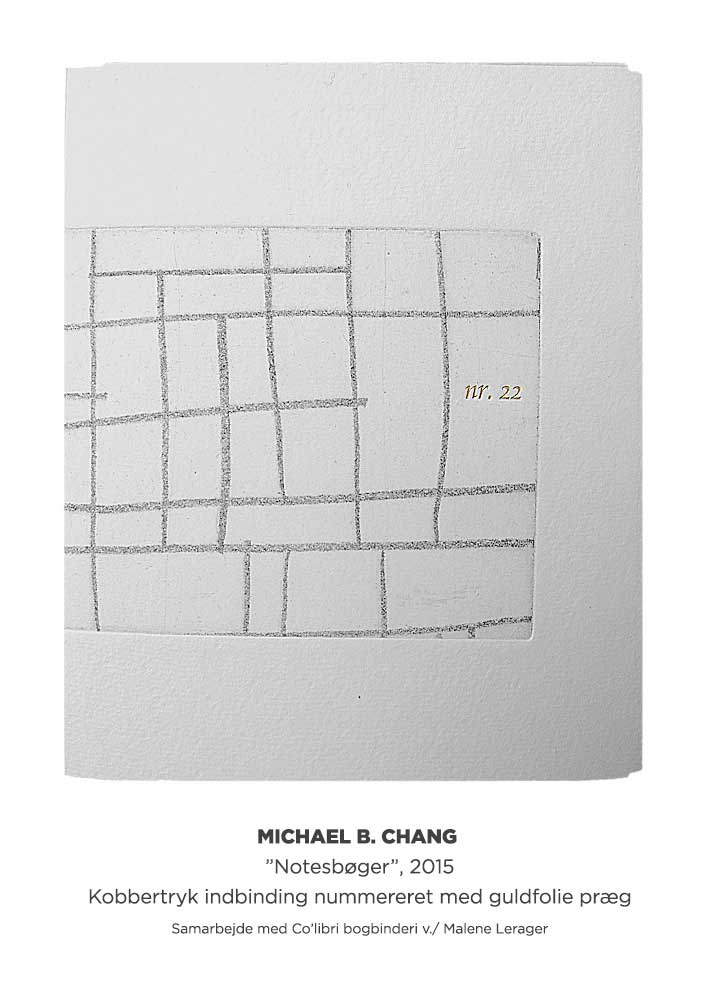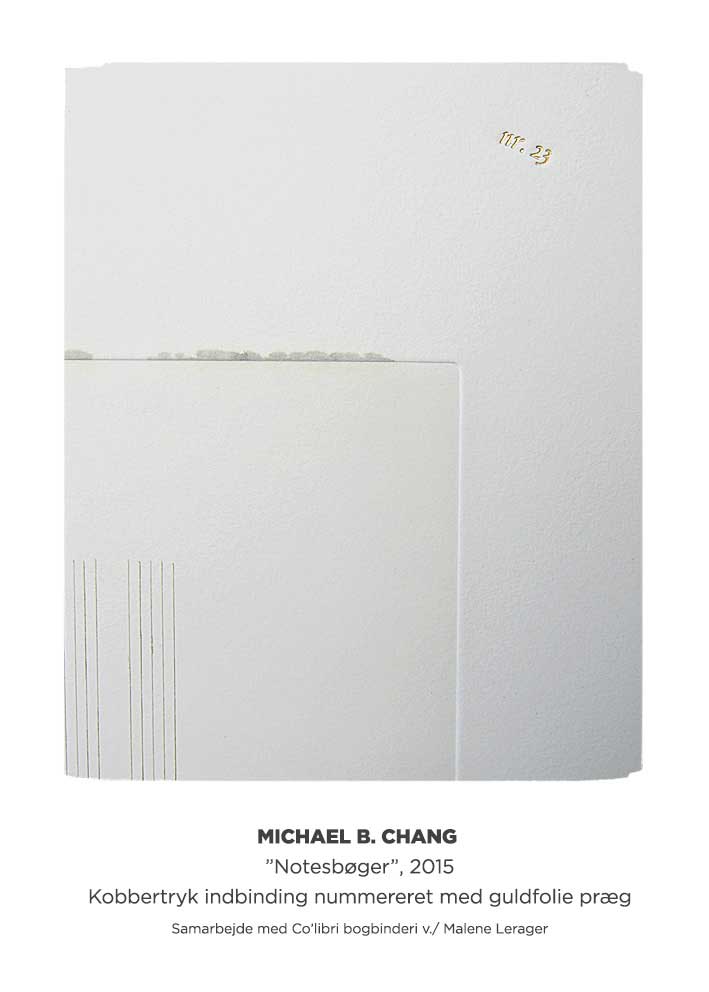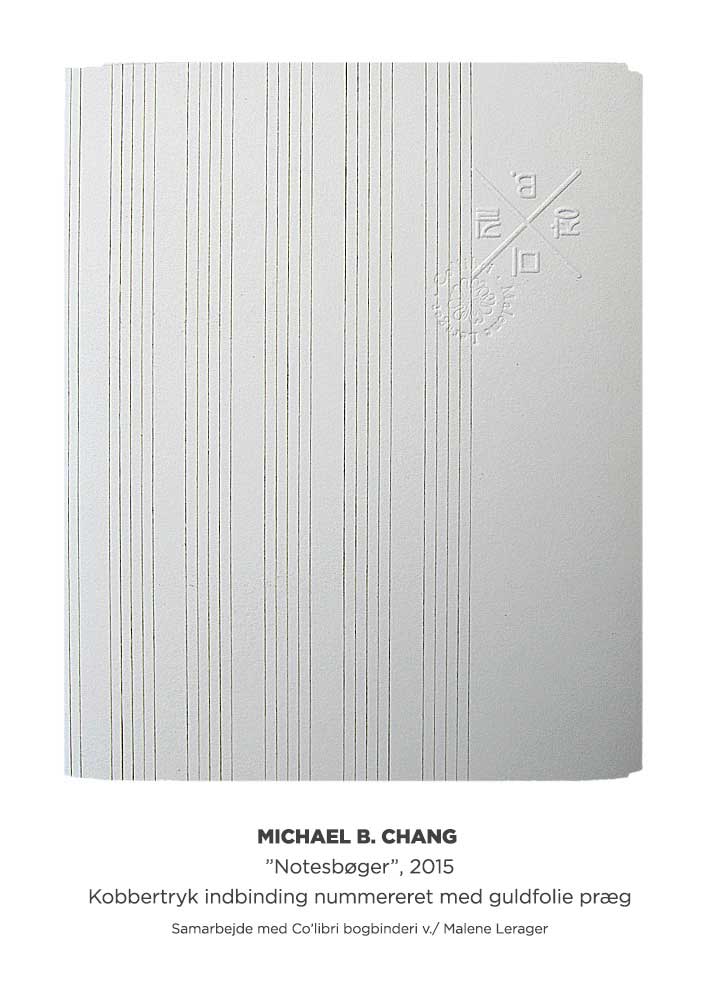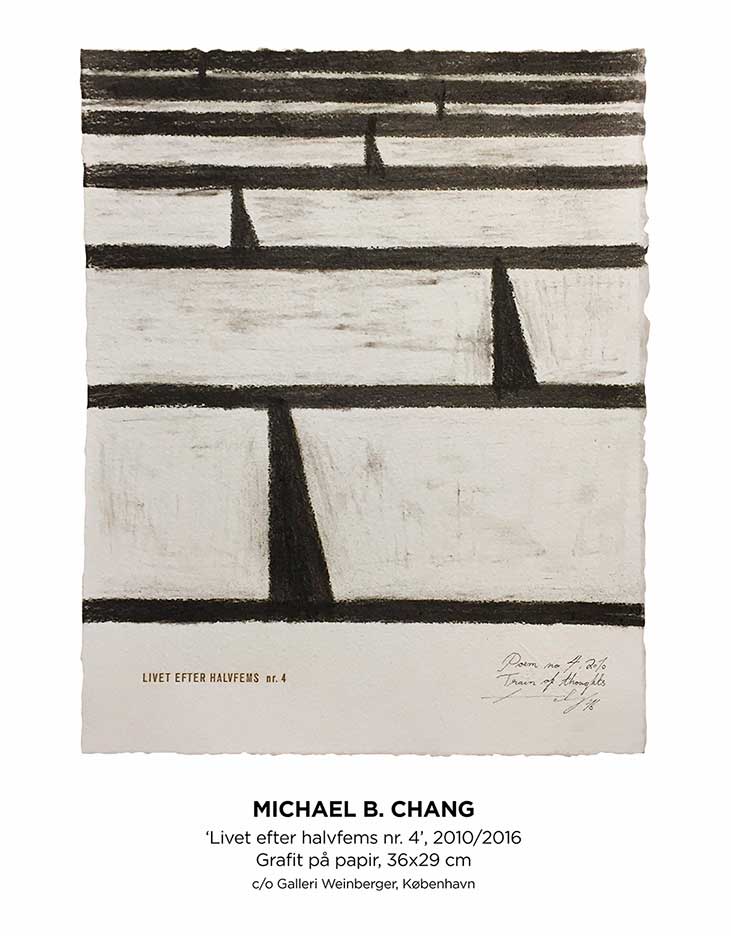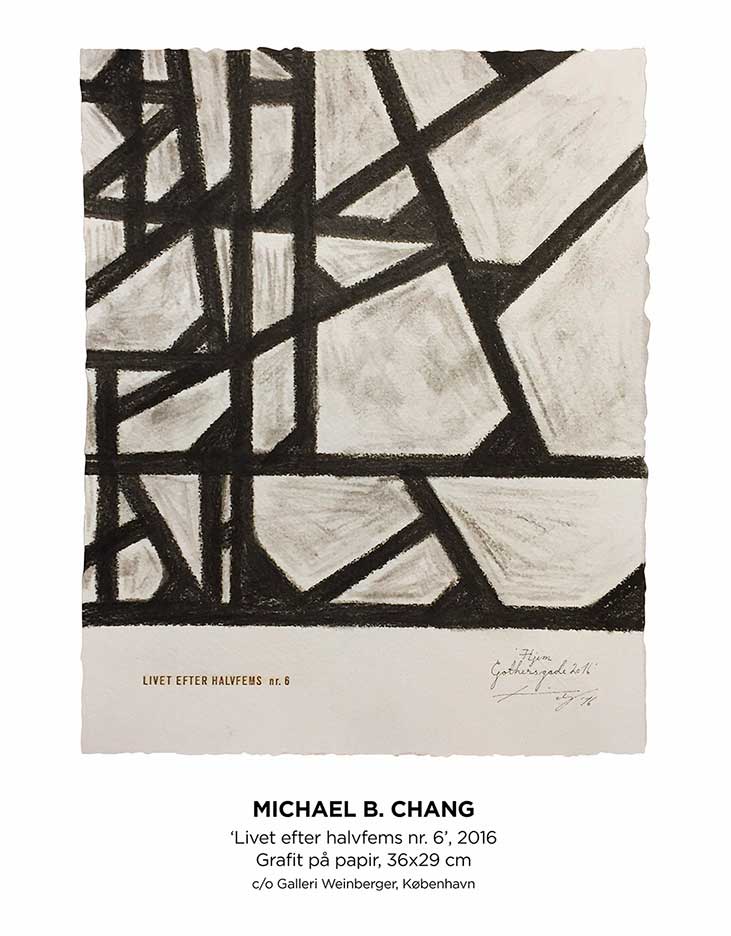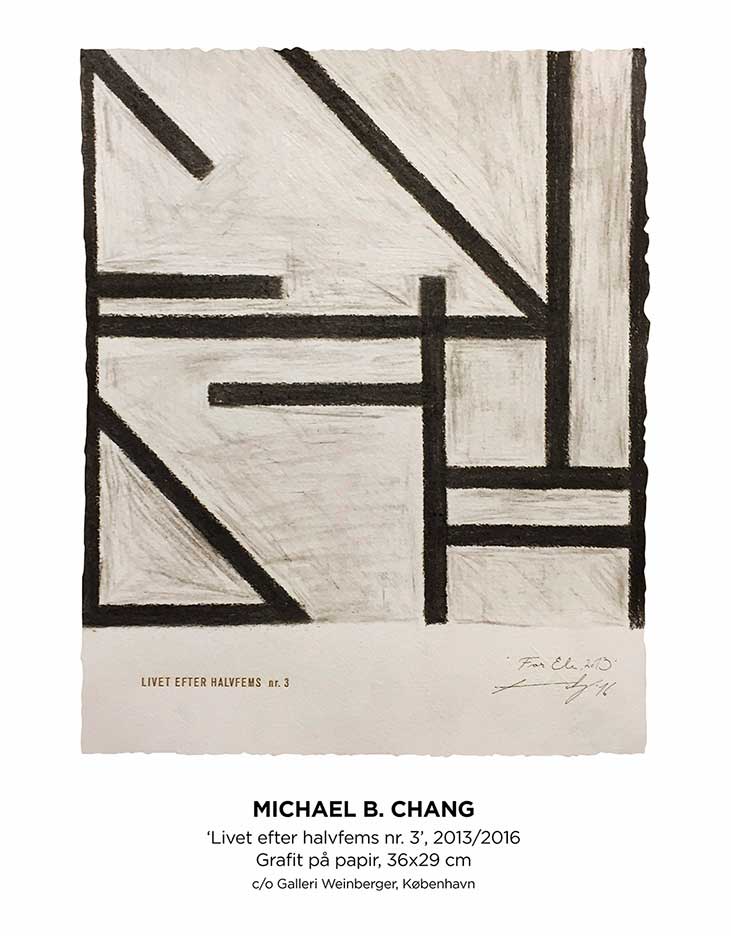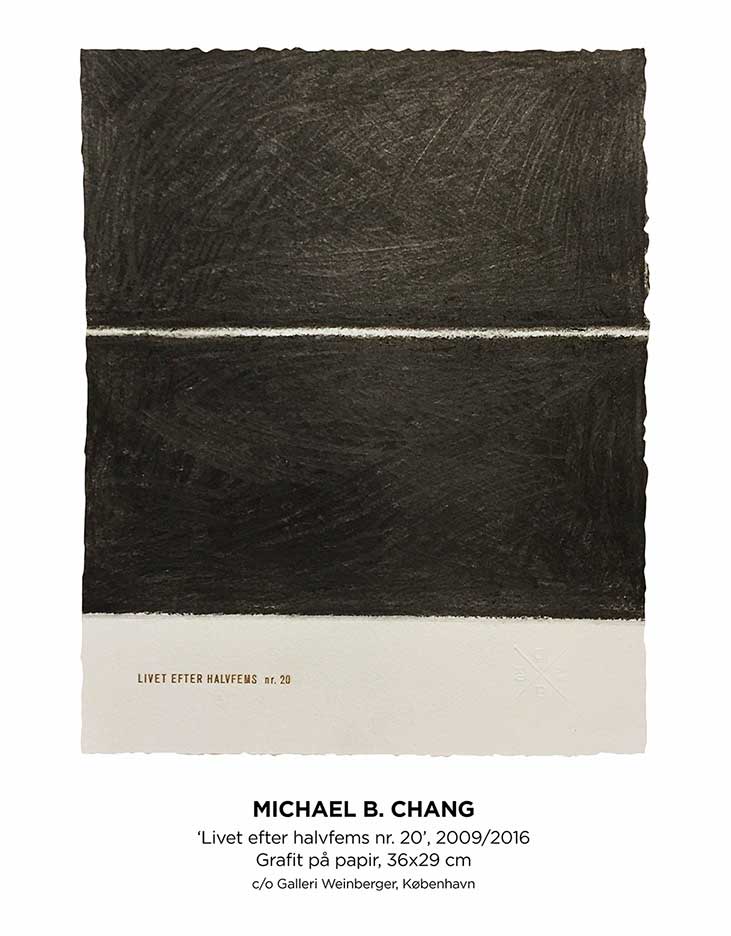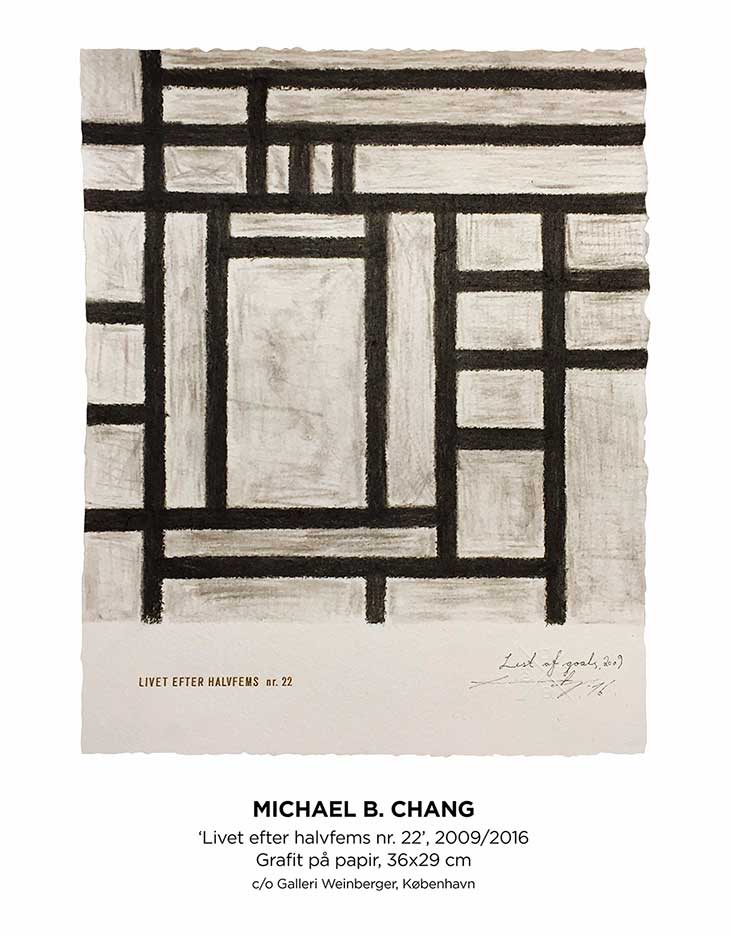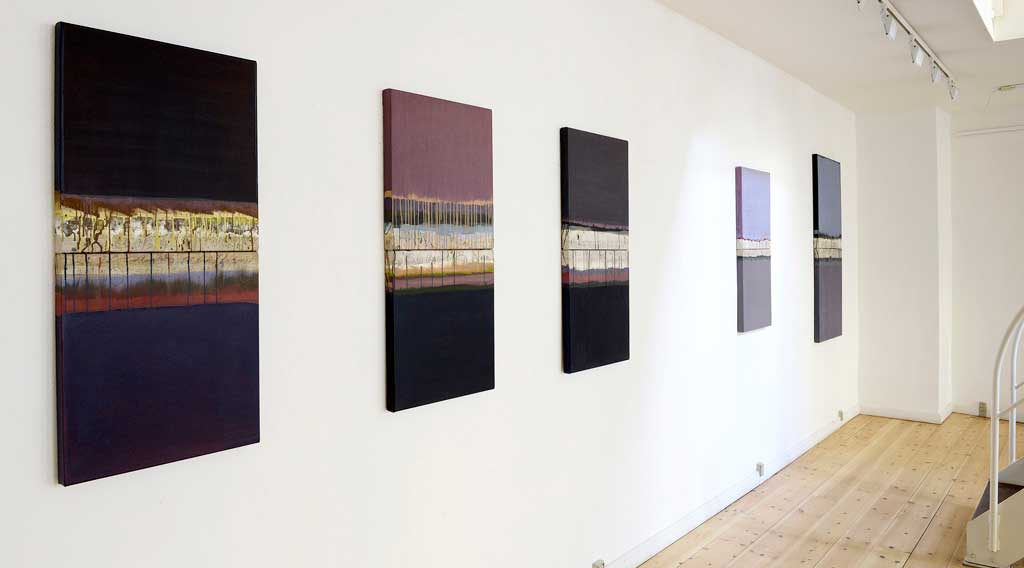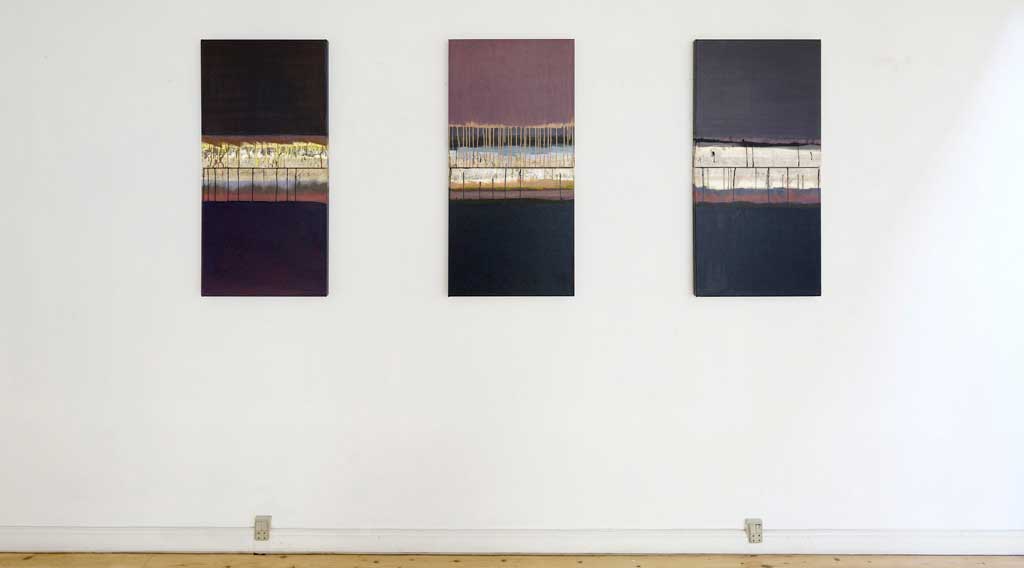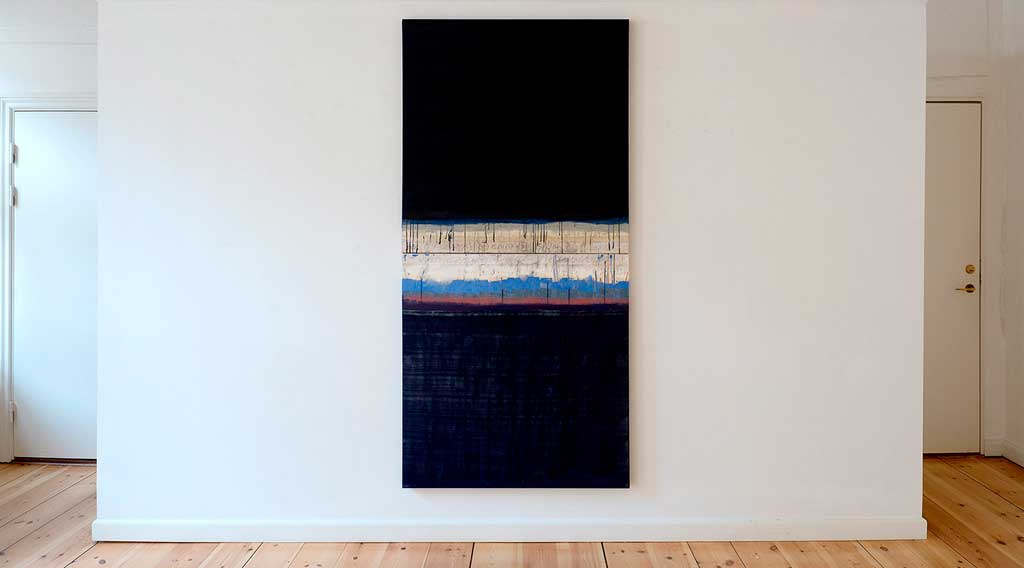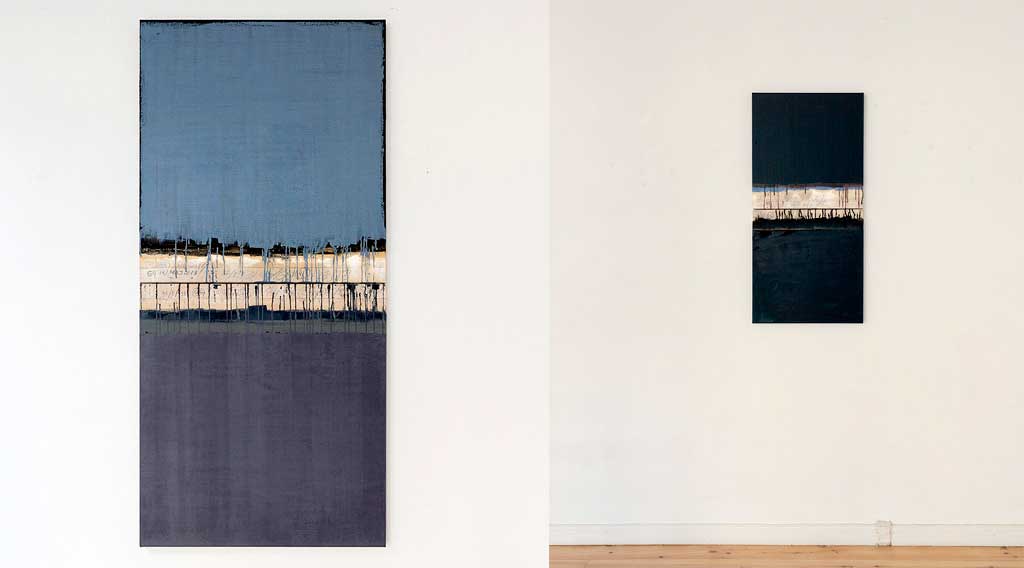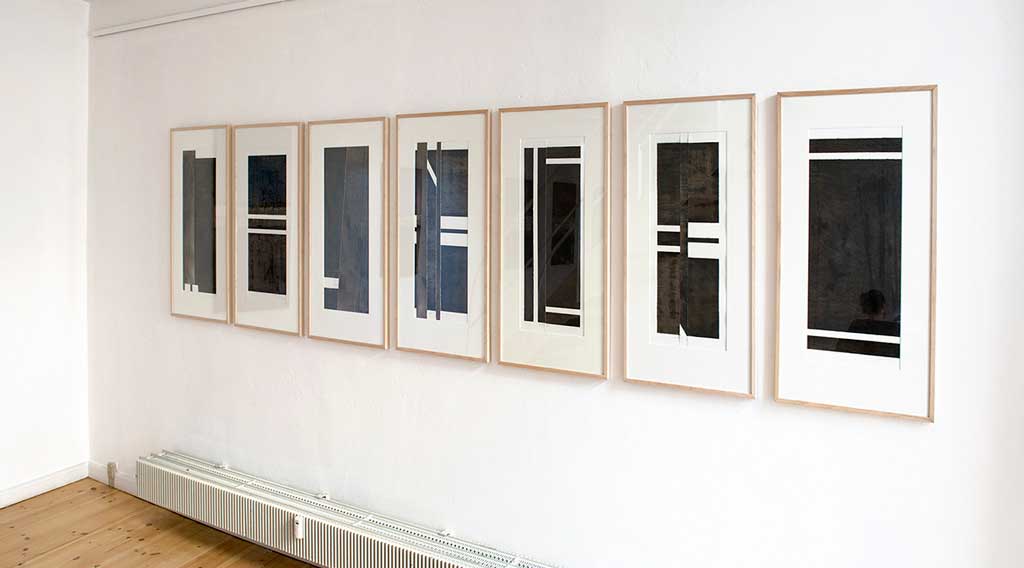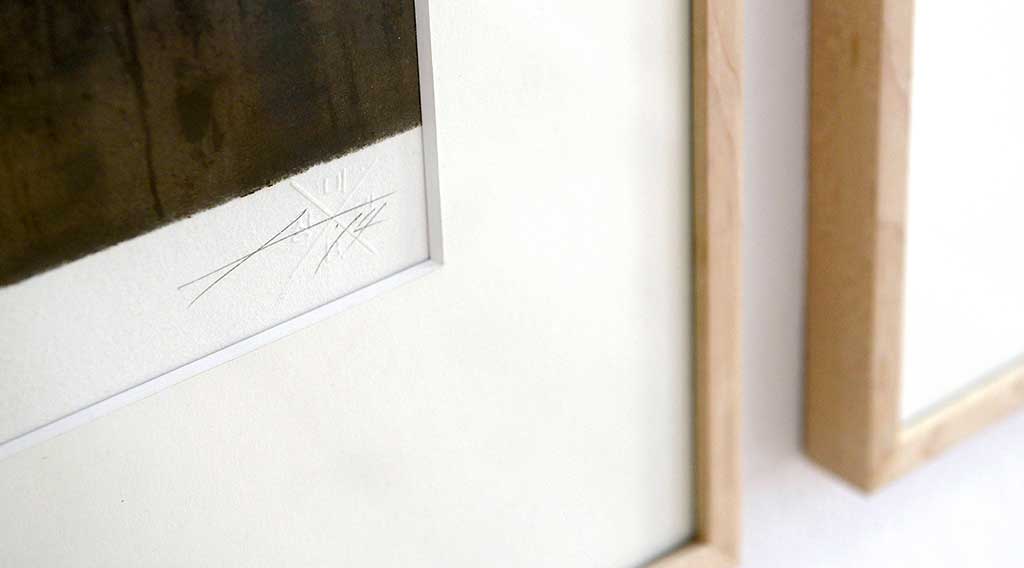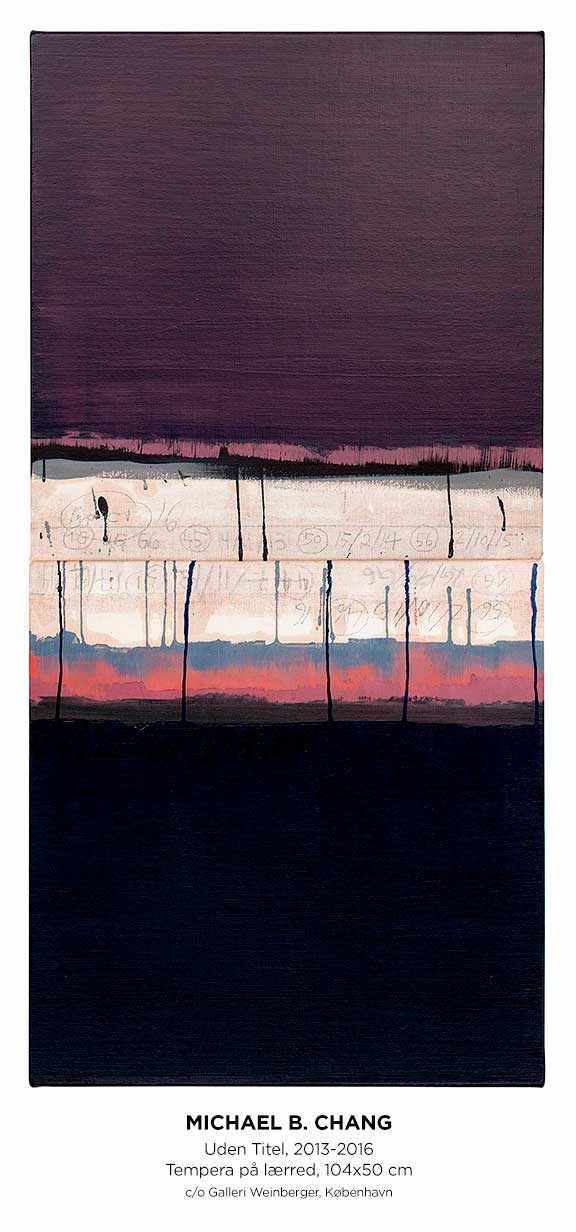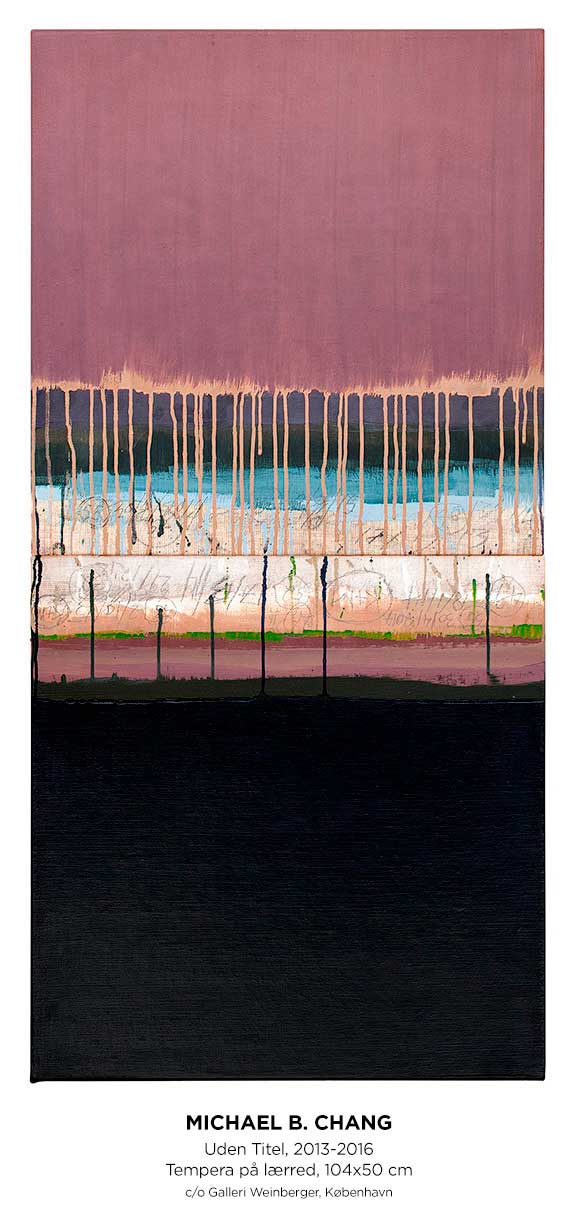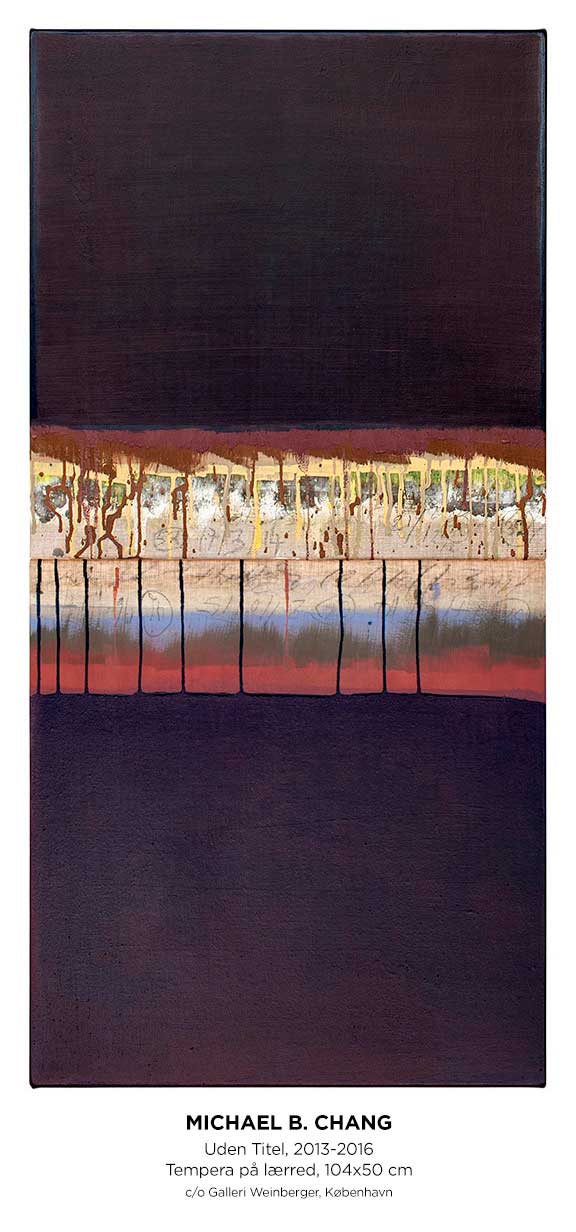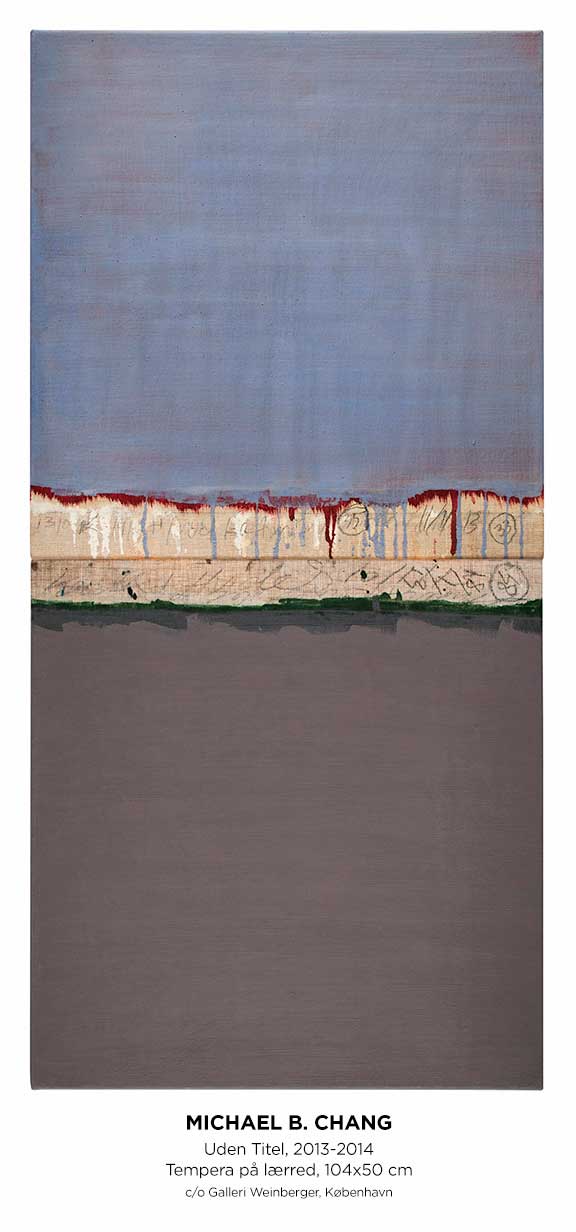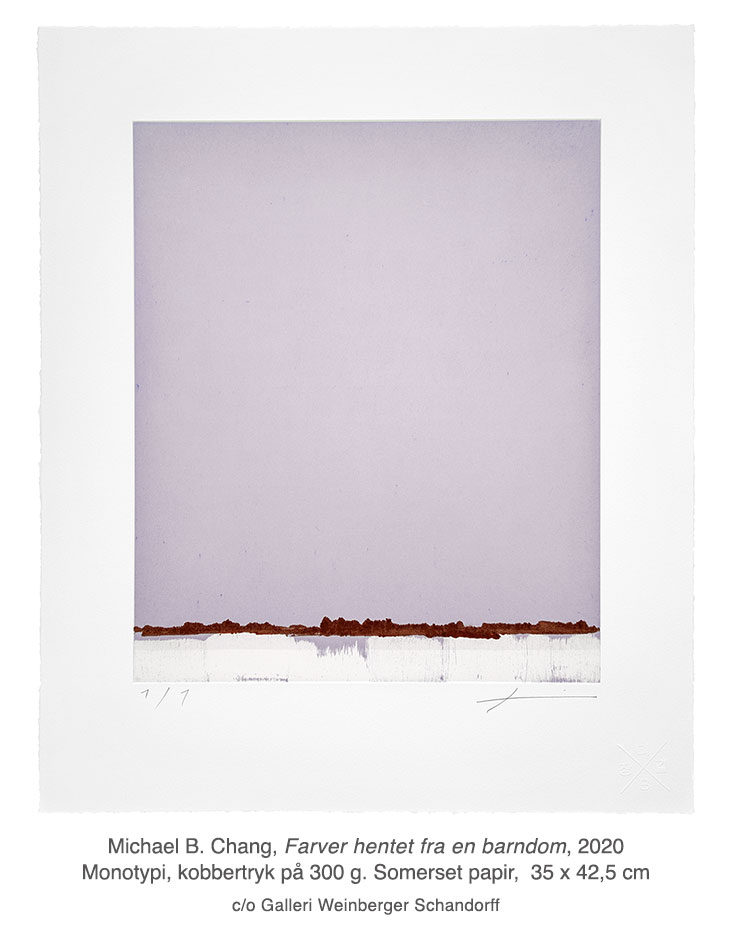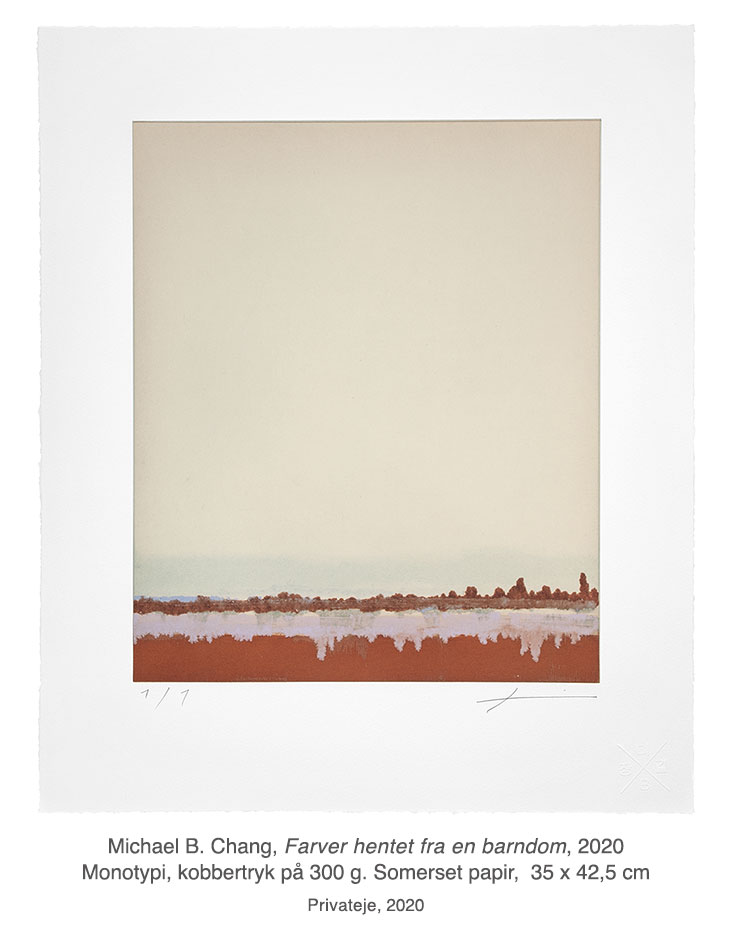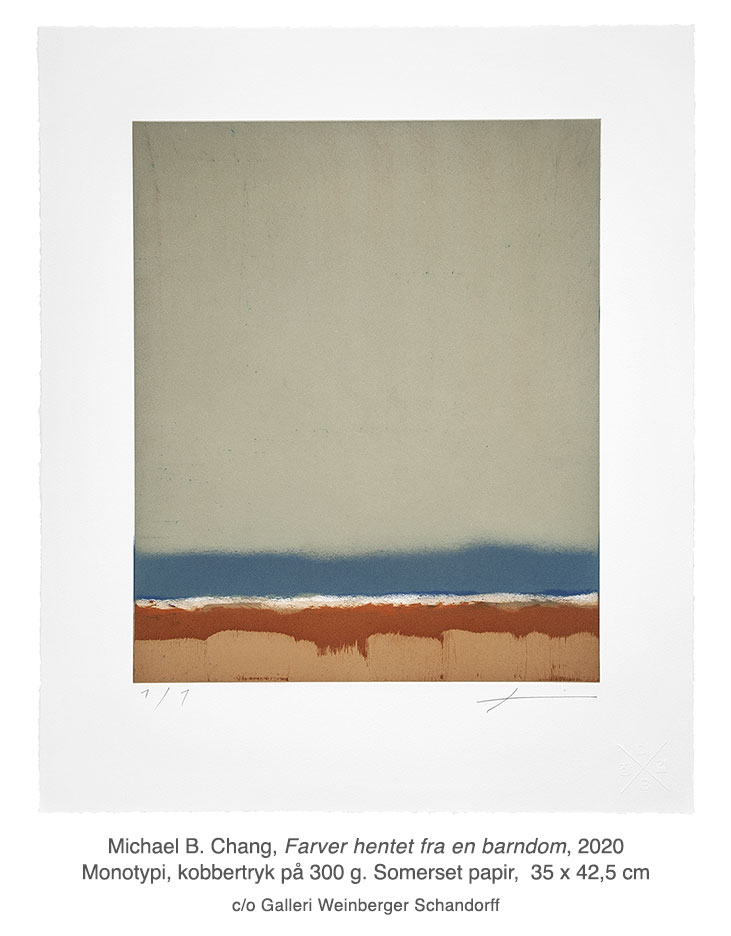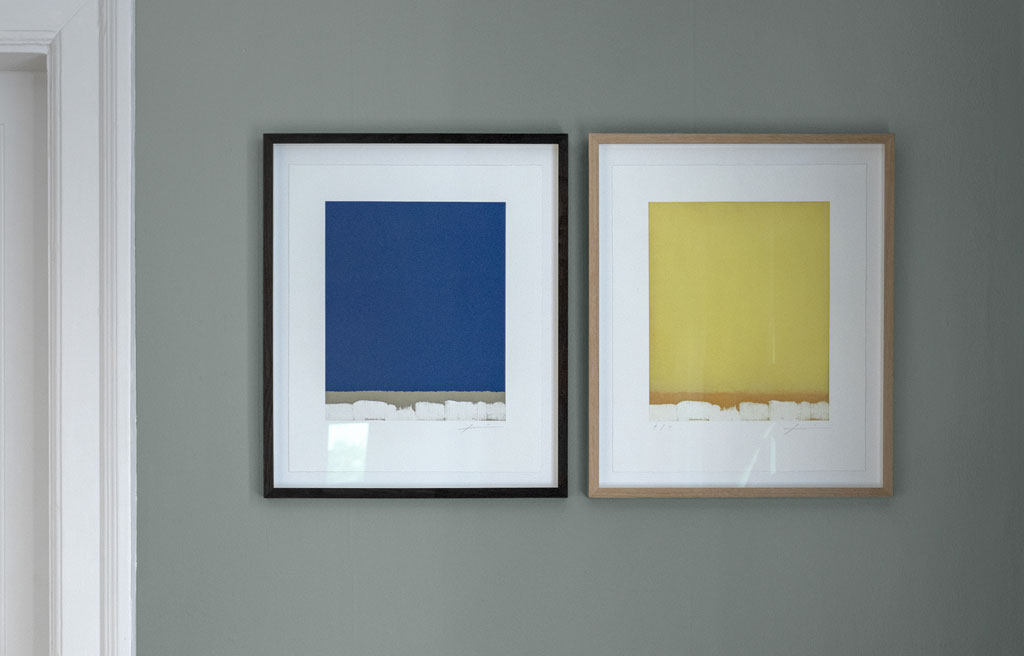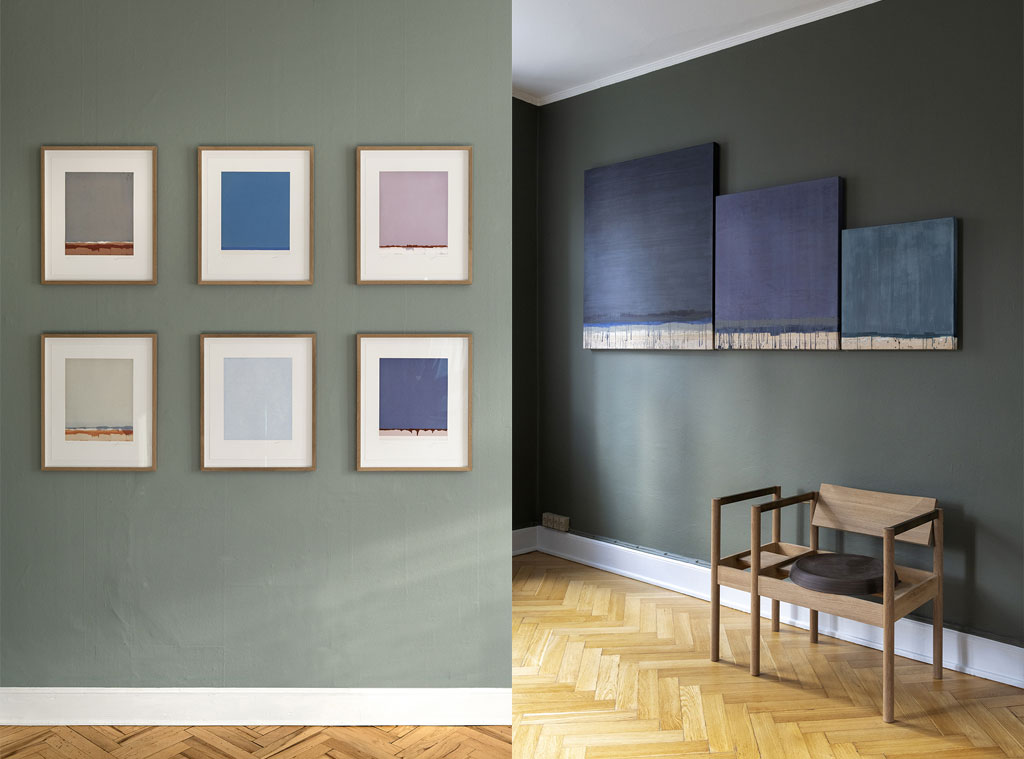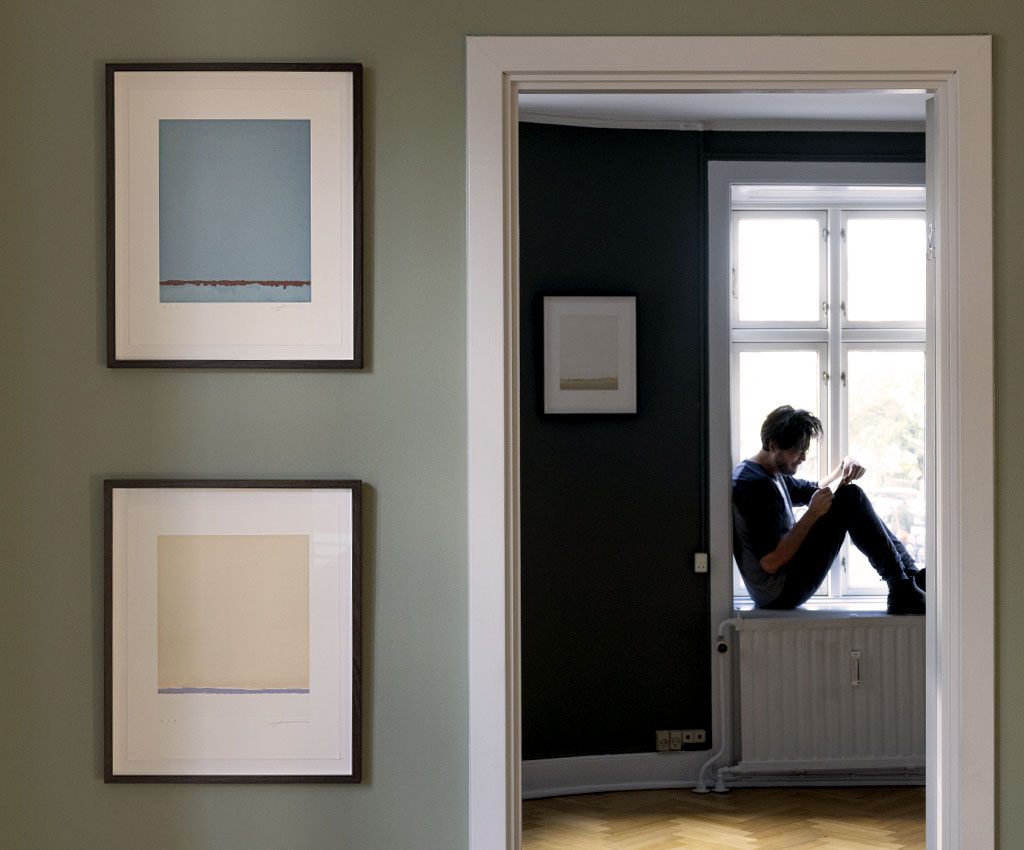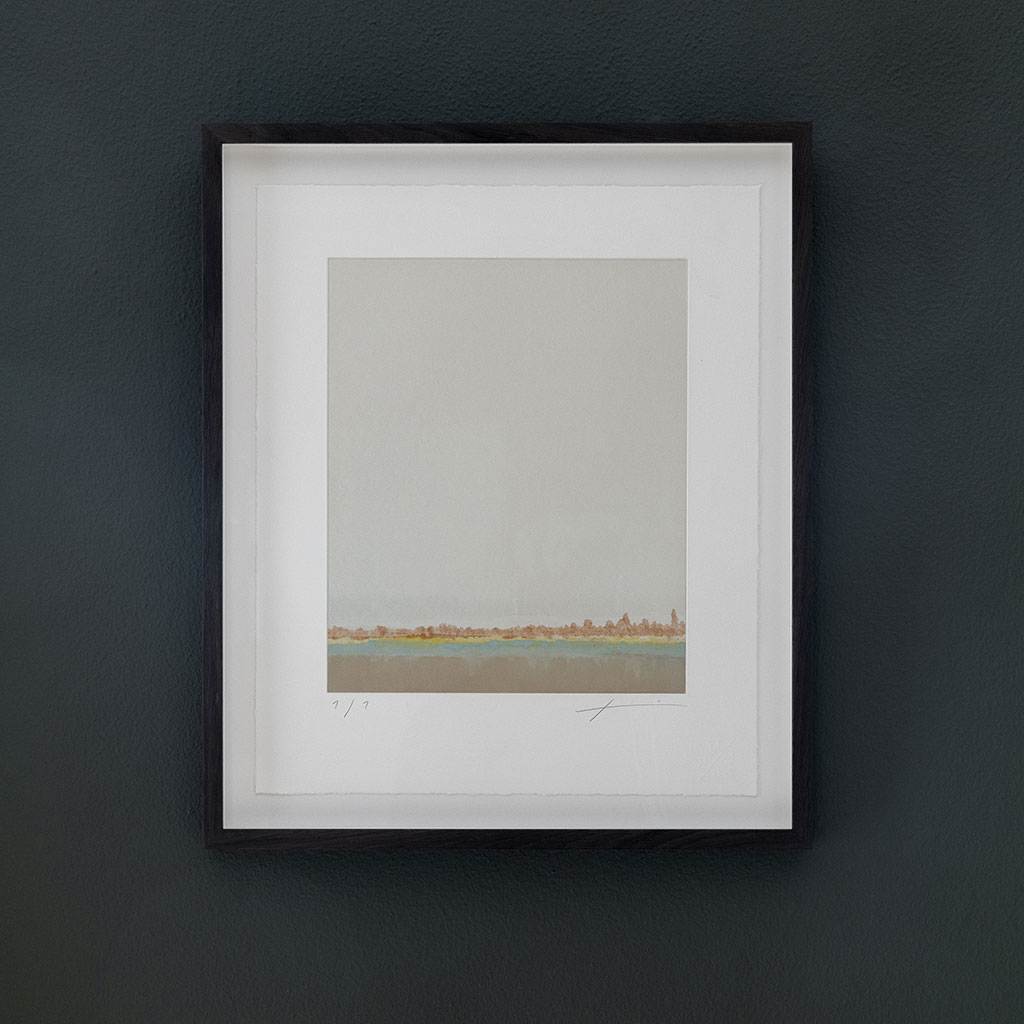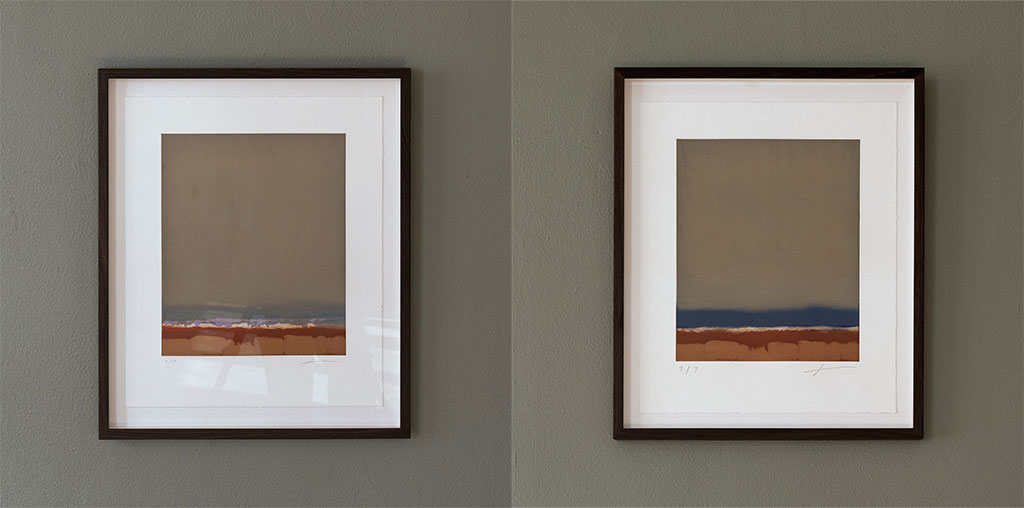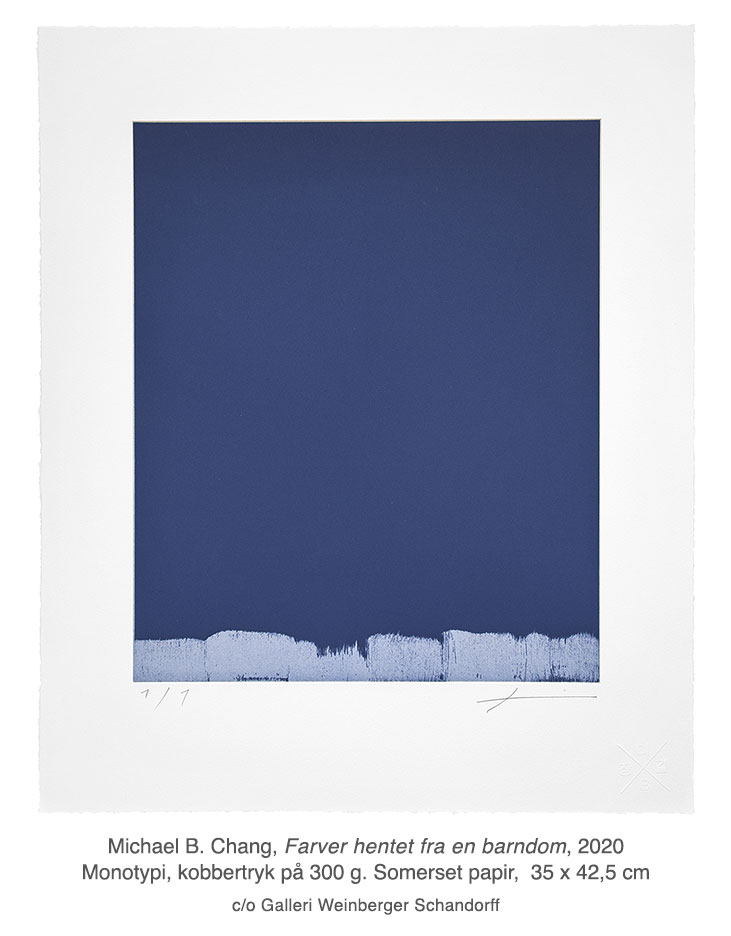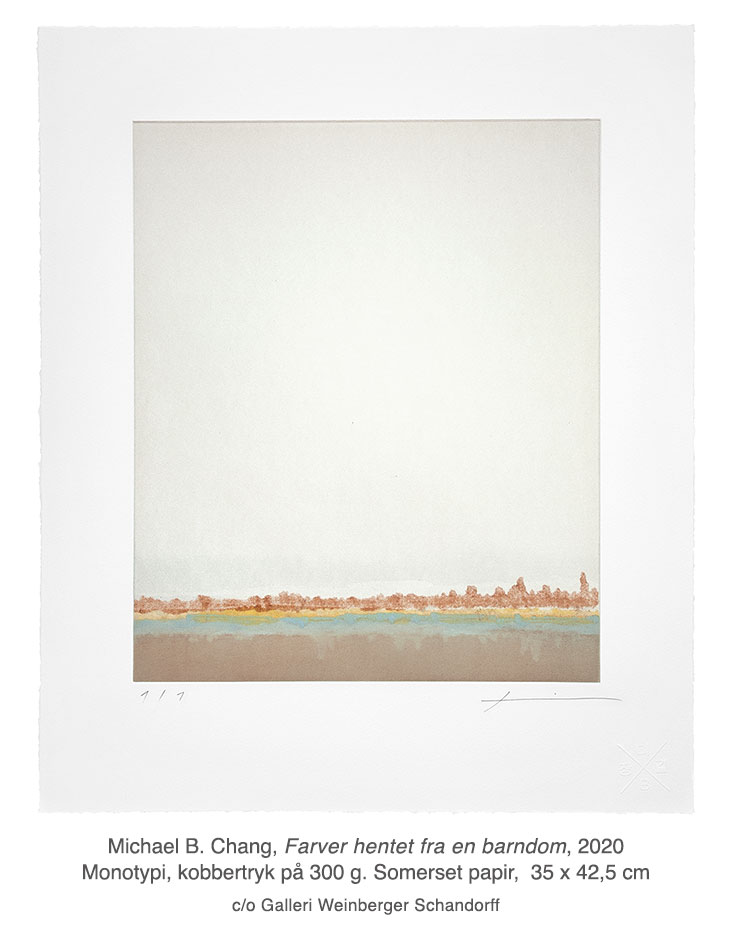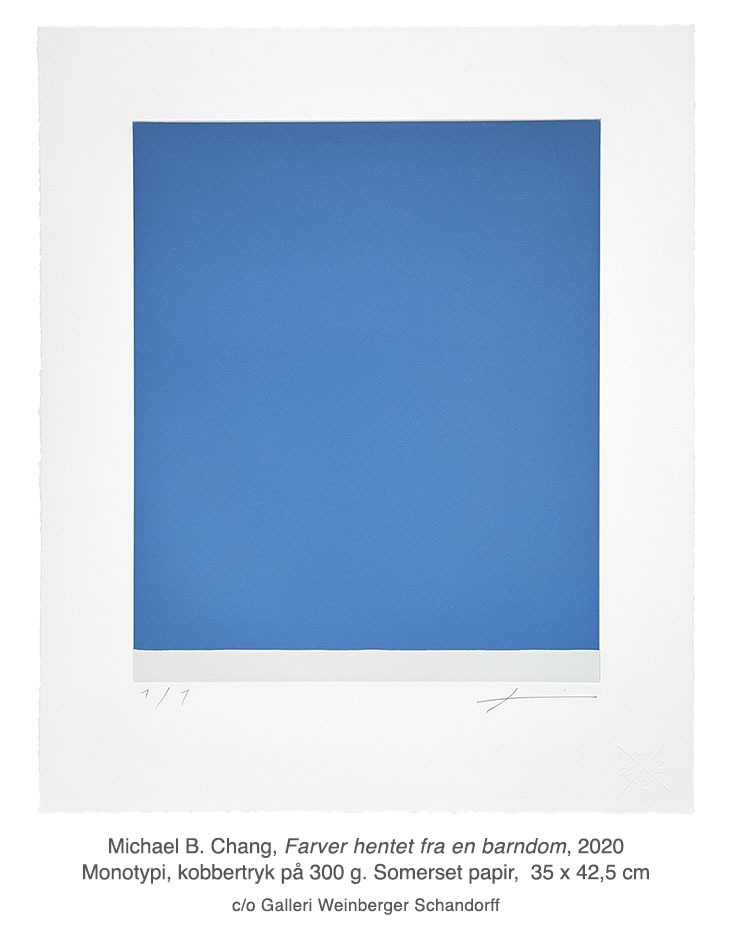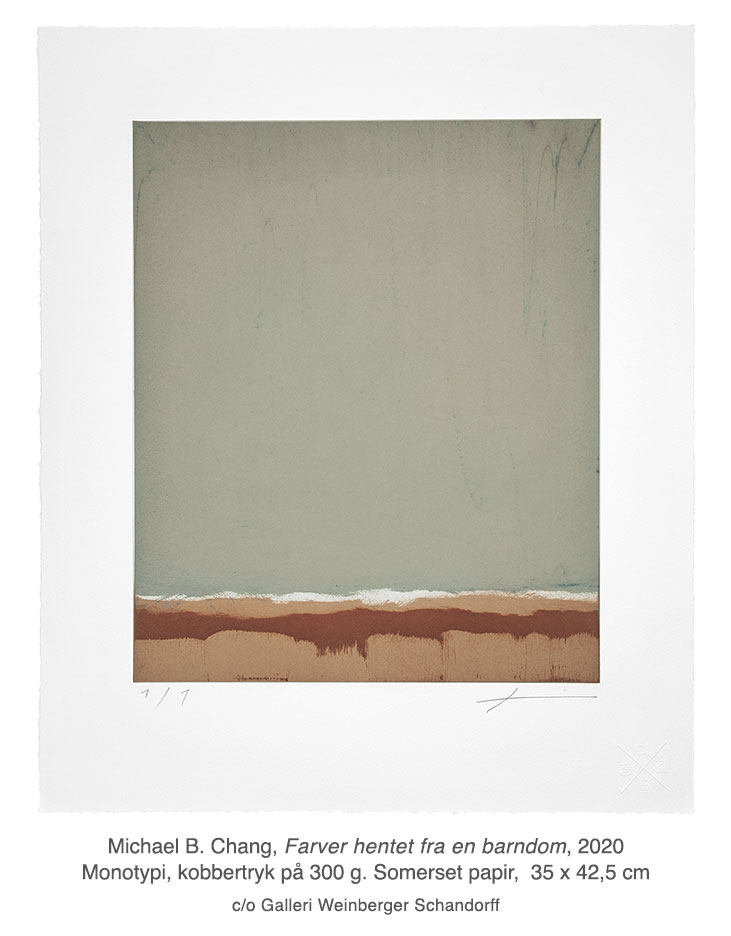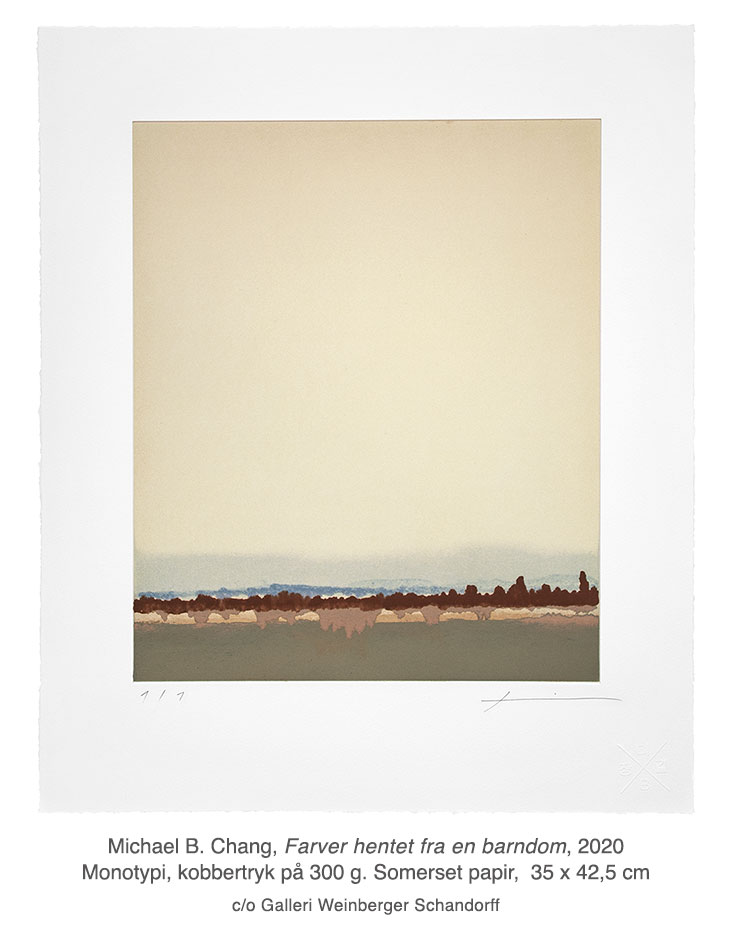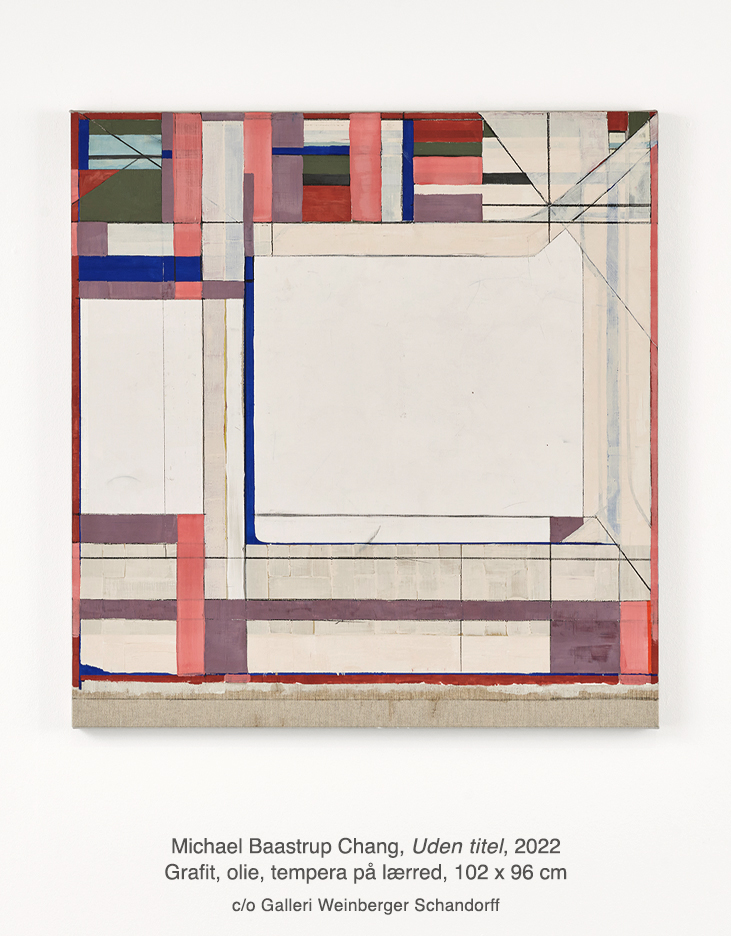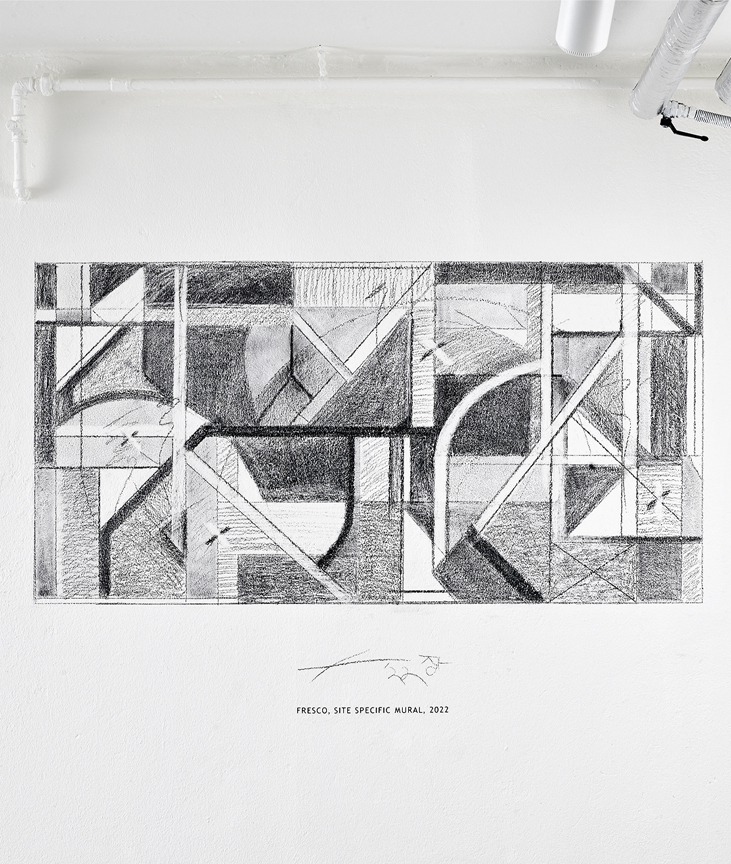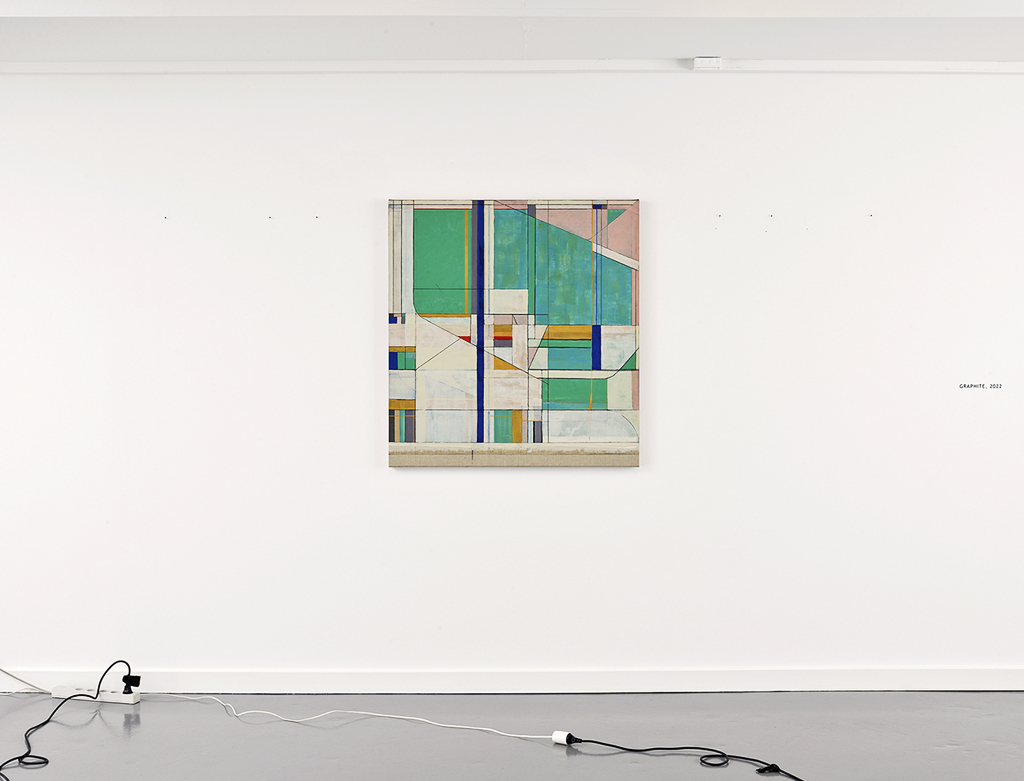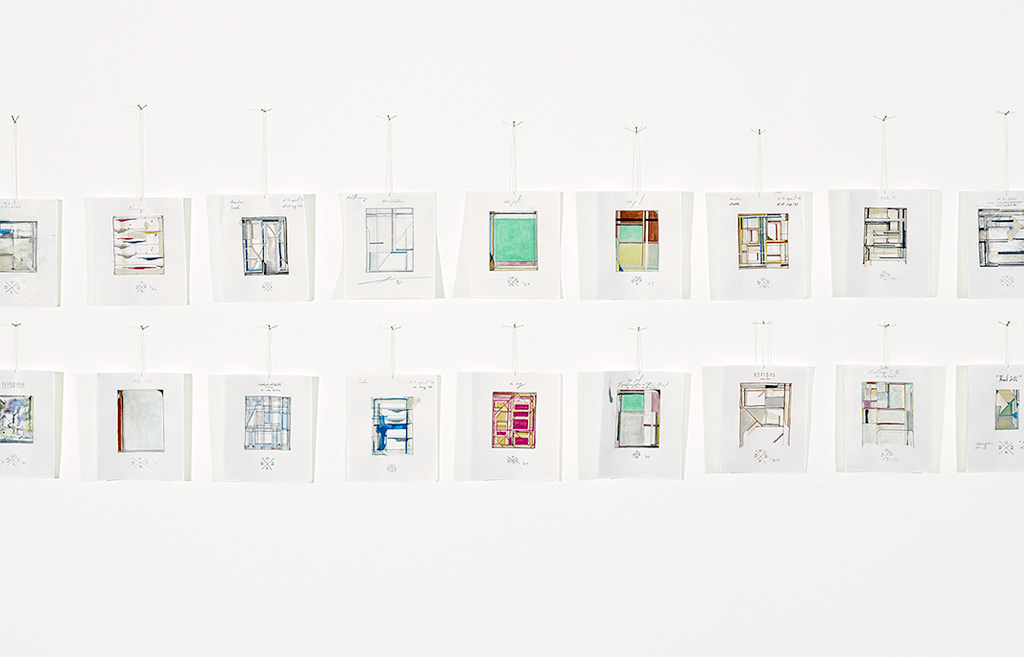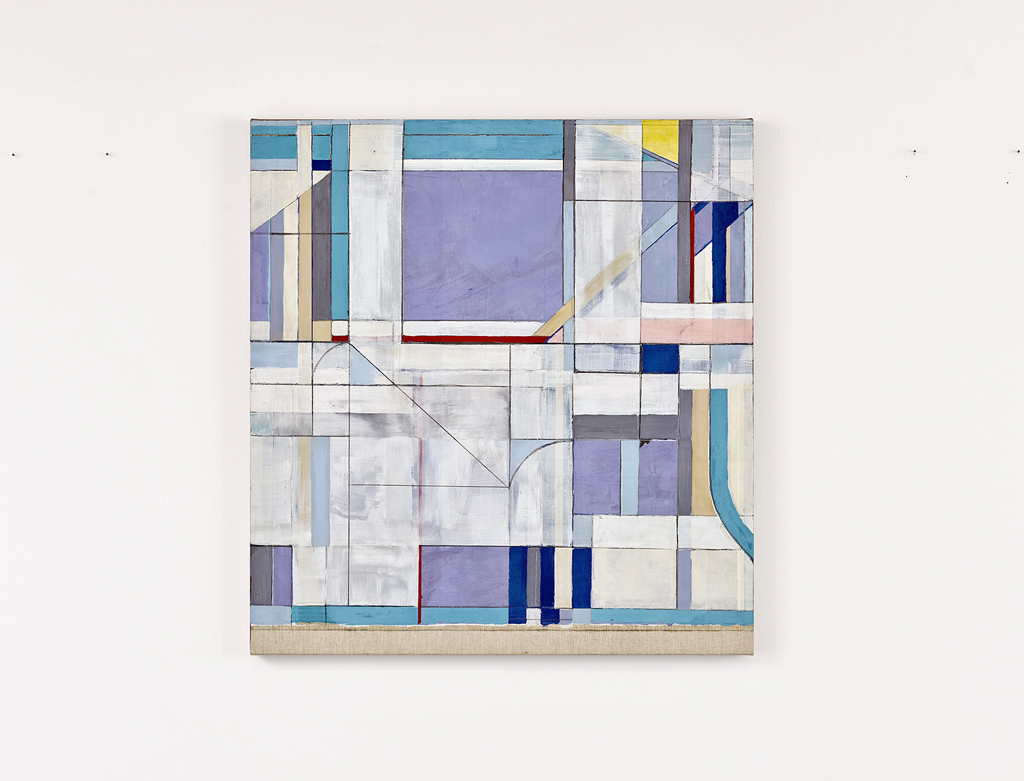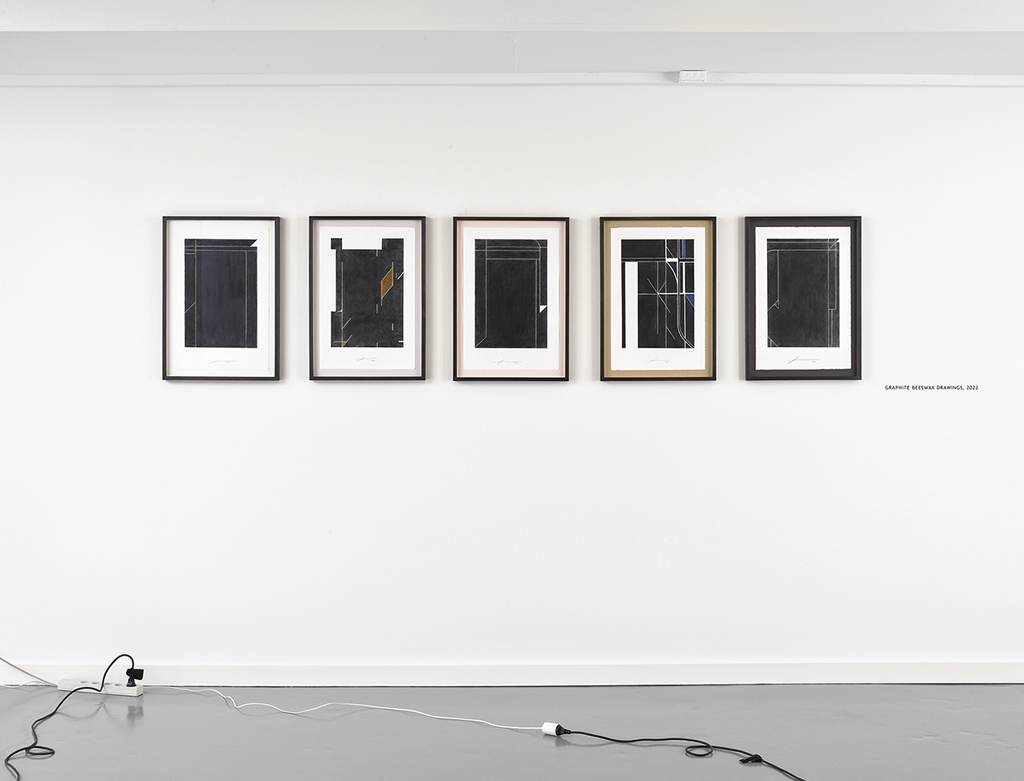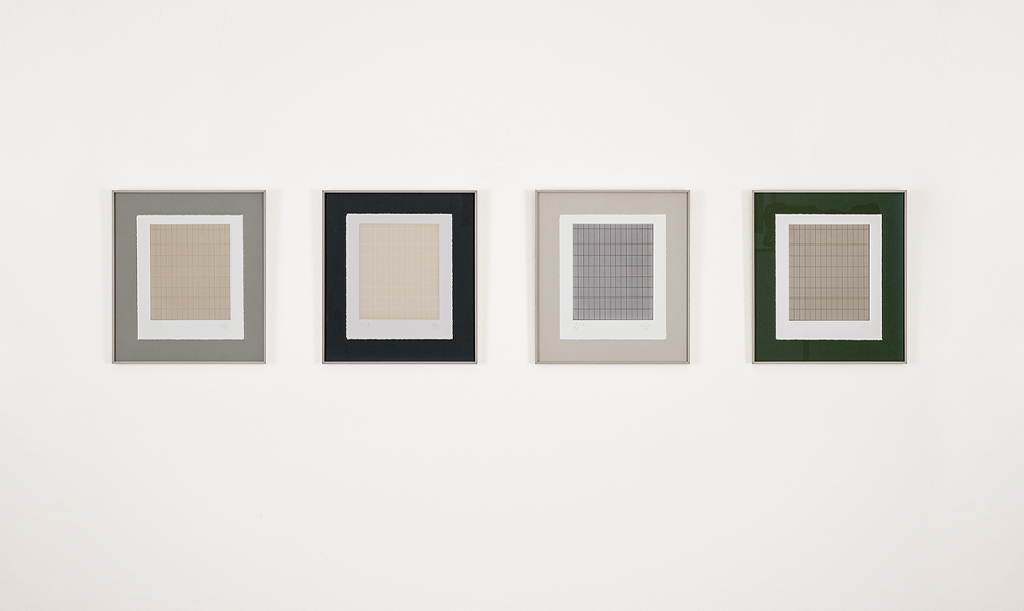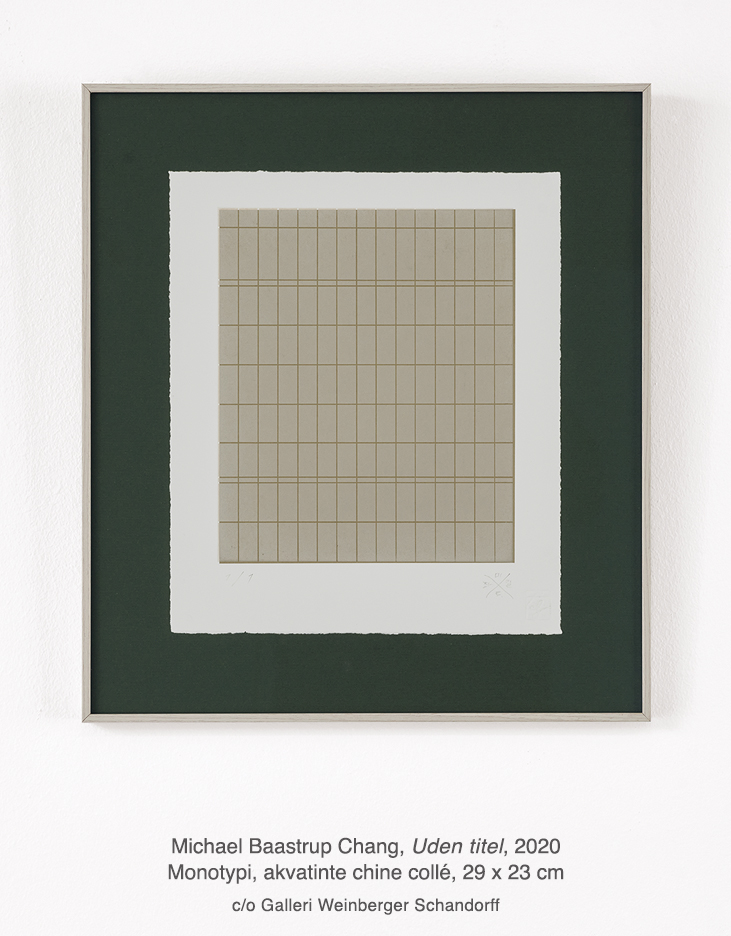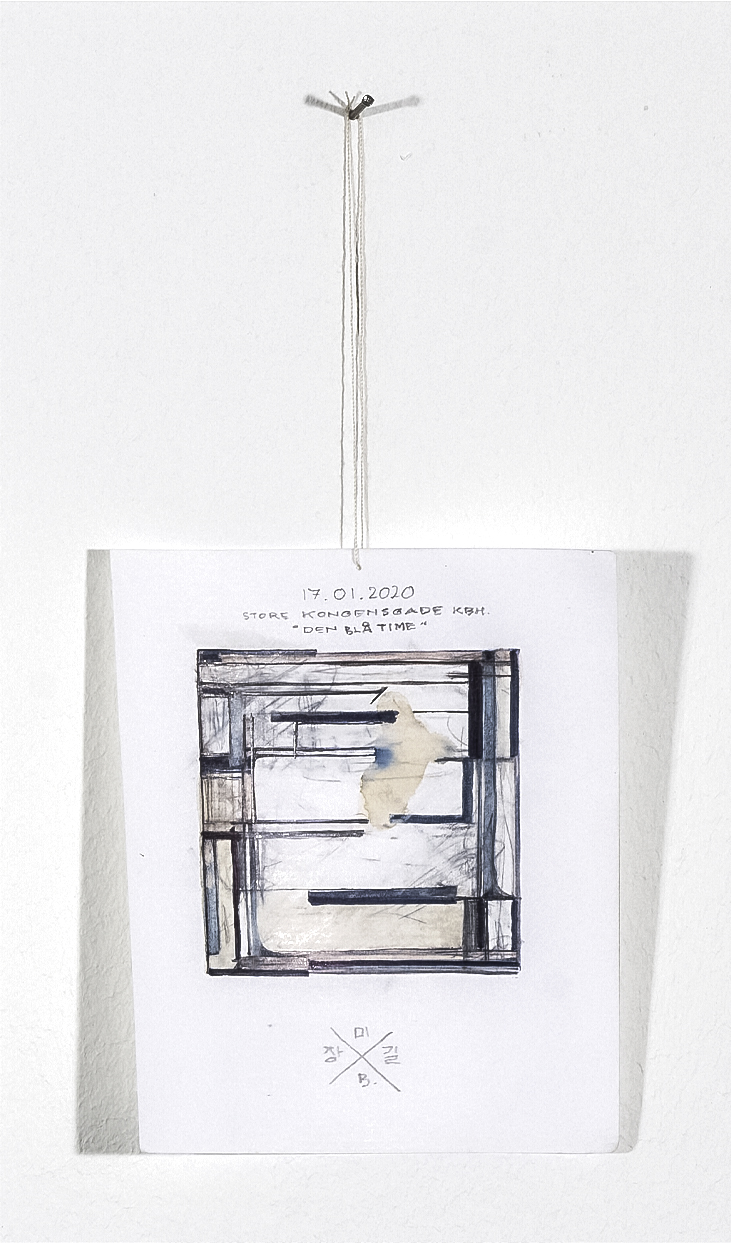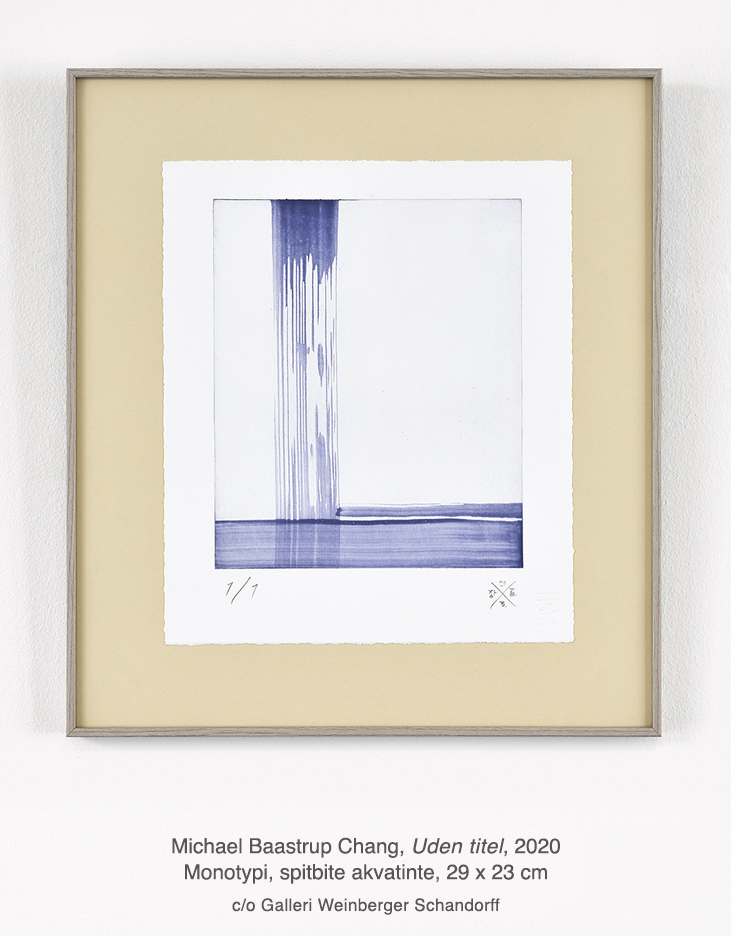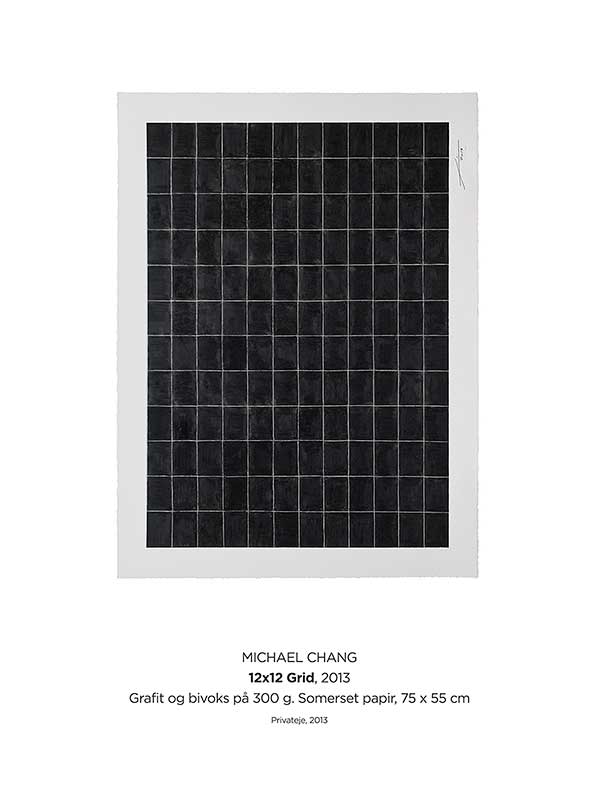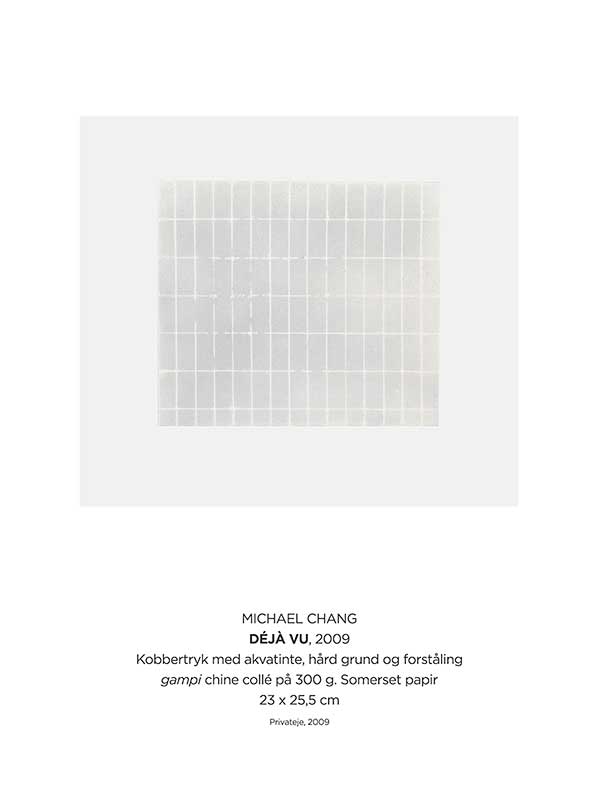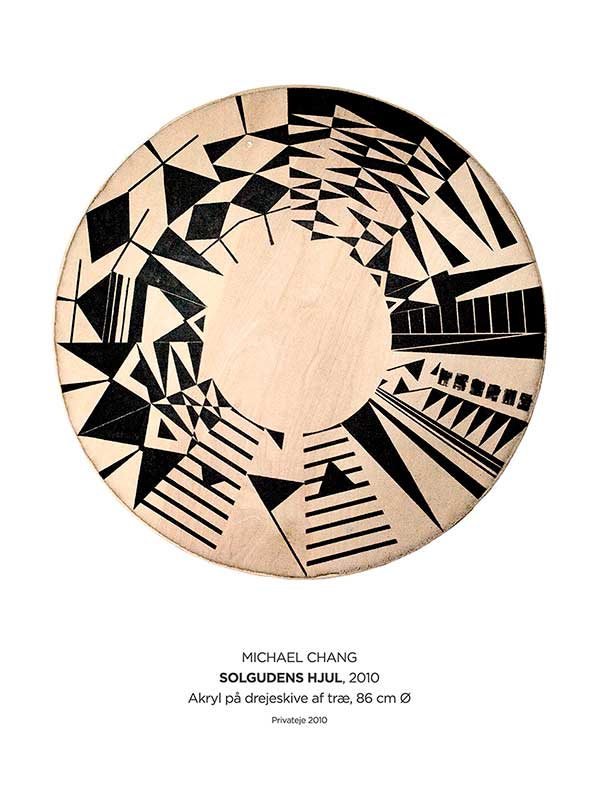LEGATER
2011 Projektlegat, The New York State Council on the Arts
2010 Rejselegat, Statens Kunstfond
2009 Rejselegat, Statens Kunstfond
1994 Studielegat, City of Westminster, The London Borough
ARBEJDSOPHOLD
2023 Studie i spitbite, 1 uge, Printers Proof, Copenhagen
2020 Studie i monotypi, 3 uger, Printers Proof, Copenhagen
2013 Studie i fotogravure, 2 uger, Crown Point Press, San Francisco, USA
2012 Grafik værkstedet, 3 uger, Statens Værksteder for Kunst, Copenhagen
2011 Grafik værkstedet, 4 uger, Statens Værksteder for Kunst, Copenhagen
2011 Eksperiment med multimedie installation, 1 uge, Arnot Art Museum, Elmira New York, USA
2010 Scenografiske undersøgelser og opførelse af dansestykke, 2 uger, Stringdance+Media, Brooklyn New York, USA
2009 Koreografiske undersøgelser, 2 uger, Stringdance+Media, Brooklyn New York, USA
2009 Studie i akvatinte, hård- og blødgrund, 2 uger, Crown Point Press, San Francisco, USA
2006 Studie i anatomi, 4 uger, Det sundhedsvidenskabelige Fakultet, Panum Instituttet, Makroskopisk afd., Copenhagen
2005 Studie i anatomi, 4 uger, Det sundhedsvidenskabelige Fakultet, Panum Instituttet, Makroskopisk afd., Copenhagen
SEPARATUDSTILLINGER
2022 Aug. 19 - Sep. 24, Graphite, Galleri Weinberger Schandorff, Esplanaden 8D, Copenhagen
2020 Nov. 14 - 29, Farver hentet fra en barndom - nye arbejder på papir, Galleri Weinberger Schandorff, Frederiksberg, DK
2016 Mar. 4 - Apr. 16, Livet efter halvfems, Galleri Weinberger, Valkendorfsgade 13, Copenhagen
2015 Dec. - Jan., The Journeyman (revisited), Kunstforeningen Det Kgl. Bib., Søren Kierkegaards Plads 1, Copenhagen
2011 Jun. 21 - Aug. 20, The Journeyman, Cath Alexandrine Danneskiold-Samse Gallery, Copenhagen
2010 Feb. 1 - Apr. 30, The Man Without Qualities, CDS Art & Visibility - Gallery for Contemporary Art, Copenhagen
2009 Aug. 29 - Sep. 26, Pictures of Nothing, Formverk Art Zone, Eskilstuna, Sweden
2009 Apr. 1 - Maj 30, Rejected, Strandgade 10, Copenhagen
2008 Nov. 3 - 26, Monochromes & Short Wave Paintings, Frederiksgade 2, Aarhus, DK
2008 Maj 1, Four Grades of Reality, Vandkunsten 3, Copenhagen
GRUPPEUDSTILLINGER
2023 Jun. 24 - Aug. 19, Artwork Orange, Galleri Weinberger Schandorff, Esplanaden 8D, Copenhagen
2021 Aug. 13 - 28, Pop-Up Show: Konkret, Galleri Weinberger Schandorff, Ordrupvej 98D, Charlottenlund, DK
2020 Mar. 20 - Apr. 18, The Postal-Collage Project No. 9, The Shuman Block, Shattuck Ave., Berkeley, CA, USA
2016 Feb. - Mar., Anonymous Drawings 2015, Kunstverein Rüsselsheim, Germany
2015 Nov. 11 - Dec. 12, Anonymous Drawings 2015, Galerie GEYSO20, Braunschweig, Germany
2015 Okt. 9 - 11, Anonymous Drawings 2015, Galerie ARTQ13, Rome/Italy
2015 Aug. 19 - Okt. 4, Pairings: Collaborative Works by Two or More Artists, Healdsburg Center for the Arts, 130 Plaza Street, Healdsburg, CA, USA
2015 Aug. 2 - 29, Anonymous Drawings 2015, Kunstverein Tiergarten | Galerie Nord , Berlin, Germany
2015 Mar. 27 - Apr. 12, The Postal-Collage Project No. 4, The Shuman Block, Shattuck Ave., Berkeley, CA, USA
2014 Apr. 19 - Maj 31, The Postal-Collage Project No. 3, Ramon's Tailor, 628 Jones St., San Francisco, CA, USA
2014 Mar. 21 - Apr. 12 + Jun. 6-28, The Postal-Collage Project No. 3, The Shuman Block, Shattuck Ave., Berkeley, CA, USA
2013 Apr. 20 - Maj 31, The Postal-Collage Project No. 2, Ramon's Tailor, 628 Jones Street, San Francisco, Californien, USA
2013 Mar. 30 - Apr. 13, The Postal-Collage Project No. 2, The Shuman Block, 2571 Shattuck Avenue, Berkeley, Californien, USA
2012 Maj 7 - June 30, Infinity Loop, med Mette Ussing (skulptur), Cath Alexandrine Danneskiold-Samse Gallery, Copenhagen
2012 Mar. 16 - 18, The Postal-Collage Project No. 1, Ramon's Tailor, 628 Jones Street, San Francisco, Californien, USA
2012 Feb. 25 - 26, The Postal-Collage Project No. 1, The Shuman Block, 2571 Shattuck Avenue, Berkeley, Californien, USA
2011 Apr. 5 - 8, Fragments, Arnot Art Museum, Elmira New York, USA
2010 Okt. 16, Stories of the Sun God, Valerie Green Dance Entropy, Queens New York, USA
2010 Sep. 26, Stories of the Sun God, Triskelion's Collaborations in Dance Festival, Brooklyn New York, USA
2009/2010 Dec. 12 - Jan. 17, Anonymous Drawings No. 10, Kunstraum Kreuzberg, Bethanien, Berlin, Tyskland
2009 Dec. 14 - 22, The Vitruvian Woman, Video Dia Loghi, Velan Gallery for Contemporary Art, Torino, Italien
2009 Okt. 7 - 14, At the Zenith, Magacin Gallery, Belgrade, Serbien
2009 Aug. 29 - Sep. 26, The Vitruvian Woman, Formverk Art Zone, Eskilstuna, Sverige
2009 July 25, Fragments, Berkeley Commonplace, The Shuman Block, 2571 Shattuck Avenue, Berkeley Californien, USA
2009 Mar. 6 - Apr. 3, Water Preserves, DMA Gallery, State College, Alfred New York, USA
2009 Feb. 4 - Mar. 1, Water Preserves, State of the Art Gallery, Ithaca New York, USA
BIBLIOGRAFI
Kataloger
2012 Infinity Loop and Images of Eggs, ISBN 978-87-992964-6-0
2011 The Journeyman, ISBN 978-87-992964-4-6
2009 The Man Without Qualities and Symposium, ISBN 978-87-992964-2-2
2009 Afvist/Rejected, zine i 12 eksemplarer
2008 Monochromes and Short Wave Paintings, ISBN 978-87-992844-0-5
2008 Four Grades of Reality, www.bibliotek.dk
Andre publikationer
Michael B. Chang & Thorbjørn Wulf, Samtale i Anatomisk Studiesal på Panum Instituttet, lydfil, 2 timer 25 min., Copenhagen, 2015
Michael B. Chang edited by Justina Joy Bartoli-Miller, A Collection of Essays on Art, Forlaget Uden Titel, www.bibliotek.dk, 2008-2014
Peter Lewis, 'Kirstine Autzen and Michael Chang - Untitled', /seconds. Issue 14, www.slashseconds.co.uk, England, 2014
Kastanje Chang-Vejsnæs & Michael B. Chang, Rævene og de fire bananer, iTunes eBog, Forlaget Uden Titel ApS, Kbh., 2013
Yvon Bonenfant, Will Edmondes & Micah Silver, Cries from the Guts, University of Winchester, UK, 2012, ISBN 978-1-906113-05-6
Kirstine Autzen & Mette Marie Kallehauge, 6. SaLns #BLå, Frederiksberg, 2012
Michael B. Chang & Hans Manner-Jacobsen, Images of Eggs, podcast, 34 min. 8 sek., Copenhagen, 2011
Michael B. Chang, Interferens : interaktion med Jens Jørgens Thorsens film "Lys" 1988, Forlaget Uden Titel ApS, Copenhagen, 2011
Michael B. Chang, Steder, farver og strukturer, Berkeley, Chico, Ithaca, Elmira, Brooklyn, Torino, Belgrade, Copenhagen, 2009
Willy Darko & Di Giovanni Cordero, Video Dia Loghi [9] Festival di Video d'Arte e Video d'Artista, Torino, Italien, 2009
Tom Jørgensen, 101 Danske Kunstnere, Forlaget JA ApS, ISBN 87-982877-9-6, Holbæk, 2009
Felberbaum, Kather & Nicolela, Exquisite Corpse Video Project Vol.1 Int. Artists Collaboration, www.blurb.com, 2009
Roger Walton, Alphabook Typeface Design & Application, Duncan Baird Publishers, London, England, 1997
Anden omtale
Mona Pahle Bjerke, De 7 mest spennende verkene på Höstutstillingen, www.nrk.no, Oslo, Sep. 26, 2017
Trine Ross, Dansk krop overmaler Munch, Warhol og Bacon med sort, Politiken.dk, Copenhagen, Jun. 24, 2011
Ray Finger, Fragments on display at Arnot museum, Star-Gazette, Elmira NY, USA, Apr. 5, 2011
Claudia Corrieri, Exquisite Corpse Video Project: a Network first, ArtReview.com, London, England, Mar. 22, 2010
Tita Nordlund-Hessler, Nu vill han göra bilder av tomrum, Eskilstuna-kuriren, Eskilstuna, Sverige, Aug. 29, 2009
ANDRE PROFESSIONELLE AKTIVITETER
Workshops, talks, foredrag oa.
2022 Aug. 22-28, Enter Art Fair 2022, c/o Galleri Weinberger Schandorff, Tunnelfabrikken Oceanvej 1, Copenhagen
2022 May 6-8, Art Herning, c/o Galleri Weinberger Schandorff, MCH Messecenter Herning, Herning, DK
2021 Aug. 27 - Sep. 30, Pop-Up Show: Michael Baastrup Chang, c/o Galleri Weinberger Schandorff, Strandvejen 54, Hellerup, DK
2020 Okt./Nov. Danmarks Radio, DR1 Drama, 'Ulven kommer', malerier, tegninger og kobbertryk som rekvisitter
2014 Jun. 28, Åbent atelier og live koncert med Slowness', Kunstnerkollektivet Tietgensgade, Copenhagen
2013 Aug. 8 +9, Aktiv Sommer', hul-kamera workshop, Kulturskolerne, Gentofte Kommune, Hellerup, DK
2012 Dec. 16-18, Video Dia Loghi ', kurator LOOP, Velan Gallery for Contemporary Art, Torino, Italien
2011 Okt. 14, Culture Night Open Workshops, Statens Værksteder for Kunst, Copenhagen
2011 Apr. 7, Meeting in the Middle, talk, Arnot Art Museum, Elmira New York, USA
2009 Dec. 14, The Vitruvian Woman, talk, Video Dia Loghi, Cinema Massimo, Torino, Italien
2009 Aug. 7, In the Morning, talk, To Let Arts Program Ithaca Commons Amphitheater, Ithaca New York, USA
2009 Aug. 6, ExLibris, talk, Steele Memorial Library, Elmira New York, USA
2009 Mar. 14, Vitruvian Woman & Exquisite Corpse, talk, Formverk, Eskilstuna, Sverige
2009 Dec. 14-16, Video Dia Loghi, co-kurator, Velan Gallery for Contemporary Art, Torino, Italien
2001 Apr. 15, Om kunst og design, foredrag, Copenhagen Tekniske Skole, Copenhagen
1999 Sep. 24, Om typografi, foredrag med Eric Mourier, HK Grafisk, Aarhus, DK
1998 Feb. 4, Om kunst og design', foredrag, Krabbesholm Højskole, Skive, DK
1997 Aug. 16, Vektorgrafik', workshop, Designskolen Kolding, Kolding
1997 - 2001 Om kunst og design', årligt foredrag, Aarhus Daghøjskole, Aarhus, DK
Arbejdsfælleskaber og kunstneriske samarbejder
2014-2016 Kunstnerkollektivet Tietgensgade, initiativtager, medstifter og medlem
2012-2013 Kirstine Autzen (DK), udstillingssamarbejde og audio/visuelt samarbejde
2011-2014 Geoffrey Scott (US) & Julie Lynn (US) aka Slowness, audio/visuelt og performativt samarbejde
2010-2017 Ulf Kristiansen (NO), audio/visuelt samarbejde
2009-2011 Christy Walsh (US), audio/visuelt, scenografisk og performativt samarbejde
2009/2012 Willy Darko (IT) & Irina Gabiani (IT), udstillingssamarbejde og audio/visuelt samarbejde
2009 Stina Pehrsdotter (SE) & Niclas Hallberg (SE), udstillingssamarbejde og audio/visuelt samarbejde
2009-2011 Jan Kather (US), udstillingssamarbejde, audio/visuelt og visuelt samarbejde
2009-2022 Marty McCutcheon (US), udstillingssamarbejde, audio/visuelt og visuelt samarbejde
2009-2011 Melanie Chilianis (AU), audio/visuelt samarbejde
2009- Justina Joy Bartoli-Miller (US/IT), samarbejde om tekst, redigering og oversættelse
VIDEOGRAFI
Udvalgte video-dokumentar fra perioden 2008-2016
Livet Efter Halvfems (2016), 7 min. 13 sek.
Studio Visit III (2013), 6 min. 37 sek.
Studio Visit II (2013), 9 min. 25 sek.
Studio Visit I (2013), 7 min. 2 sek.
Eksperiment med acetonetryk og chine-coll (2012), 2 min. 27 sek.
Infinity Loop and Images of Eggs (2012), 1 min. 35 sek.
Billeder af æg - 6th layer (2012), 13 min. 56 sek.
Billeder af æg - 4th & 5th layer (2011), 15 min.
Billeder af æg - 1st, 2nd & 3rd layer (2011), 3 min. 24 sek.
Billeder af æg - Making a Print (2011), 3 min. 48 sek.
Fragments (2011), 37 min. 29 sek.
The Journeyman (2011), 1 min. 6 sek.
The Man Without Qualities (2010), 6 min. 10 sek.
Stories of the Sun God, Part One (2009), 10 min.
Udvalgte audio/visuelle arbejder fra perioden 2007-2017
Michael B. Chang (Audio) & Ulf Kristiansen (Video), Gimme Shelter, (2017), 3 min. 24 sek.
Michael B. Chang (Audio) & Ulf Kristiansen (Video), Jealous Guy, (2014), 4 min. 42 sek.
Michael B. Chang (Audio) & Ulf Kristiansen (Video), 1916, (2013), 3 min. 41 sek.
Michael B. Chang (Audio) & Ulf Kristiansen (Video), I feel you, (2012), 5 min. 16 sek.
Michael B. Chang & Kirstine Autzen, Autzen+Chang, (2012), 52 sek.
Michael B. Chang, Two hands in the air, (2011), 3 min. 4 sek.
Michael B. Chang, One hand in the air, (2011), 3 min. 41 sek.
Michael B. Chang, No Manifesto, (2011), 1 min. 38 sek.
Michael B. Chang & Slowness, Little King, (2011), 9 min. 33 sek.
Michael B. Chang & Slowness, Black and White, (2011), 5 min.
Michael B. Chang, Y, (2010), 1 time 38 min.
Michael B. Chang, In The Morning, (2009), 1 min. 01 sek.
Michael B. Chang, Transformation, (2009), 1 min. 59 sek.
Michael B. Chang, Interfaces, (2009), 2 min. 03 sek.
Michael B. Chang, On Silence, (2008), 3 min. 56 sek.
Michael B. Chang & Slowness, Concerto Azzurro, (2008), 6 min. 10 sek.
Michael B. Chang, Espresso, (2008), 3 min.
Michael B. Chang, Pregnant, (2007), 1 min. 22 sek.
Udvalgte video-fremvisninger i perioden 2008-2017
2017 Sep 16 - Okt. 15, Gimme Shelter, Höstutstillingen 2017 Statens 130. kunstutstilling, Kunstnernes Hus, Wergelandsveien 17, Olso
2014 Nov. 17-23, Jealous Guy, L'Alternativa 21st Festival de Cinema Independent de Barcelona, Barcelona, Spanien
2014 Okt. 17-19, Jealous Guy, Northern 7th Northern Wave Film Festival, Grundarfjrur, Island
2014 Sep. 25 Nov. 1, Jealous Guy, Fourth wall film festival, Cardiff, England
2014 Sep. 10, Jealous Guy, Cologne Off X, Dsseldorf, Tyskland
2014 Aug. 30-Okt. 5, I feel you, Music Poetry Motion, Gislaveds konsthall, Gislaveds, Sverige
2014 Jealous Guy, UAMO Festival: Maj 17-18, San Francisco, USA; Jun. 6-9, Firenze, Italien; Jun. 13 Jul. 5, Linz, strig; Jun. 27 Jul. 4, Zrich, Schweiz; Jun. 30 Jul. 3, Accra, Ghana; Sep. 26-28, Berlin, Tyskland; Okt. 2-5, Leuven, Belgien; Okt. 16-19, Mnchen, Tyskland
2014 Aug. 29-31, I feel you, Okse Filmfestival, Fjordvejen 57, Snderhav, Danmark
2014 Aug. 1-3, Jealous Guy, Hackney Wicked Festival, Swan Wharf, 60 Dace Road, London, E3 2NQ, London, England
2014 Jul. 25, Jealous Guy, The Flixation Cinema Club, The Hob 7 Devonshire Road, Forest Hill, London SE23 3HE, England
2014 Jun. 28, Jealous Guy, Wayfinding film festival, Wassaic NY, USA
2014 Maj 31-Jun. 8, Jealous Guy, Transborda - Overflow, udendrsfremvisning i det historiske centrum, Alcobaa, Portugal
2014 Maj 31-Jun. 8, Y, Transborda - Overflow, udendrsfremvisning i det historiske centrum, Alcobaa, Portugal
2014 Maj 28 - 31,I feel you, AIVA International Video Art Festival 2014, Finspng, Sverige
2014 Apr. 3, I feel you, Alchemy Film and Moving Images Festival, Heart of Hawick Tower Mill, Kirkstile, Hawick, Skotland
2014 Mar. 6-9, I feel you, Oslo Screen Festival, Oslo, Norge
2014 Feb. 13-Mar. 13, Y, (3 min. version), online fremvisning, http://www.visualcontainer.net
2014 Jan. 14-, Untitled, online fremvisning, /second. edition 14, http://www.slashseconds.co.uk
2013 Dec. 24-31, 1916, Galeria Chartier, 35 Elizabeth Street, Derby Connecticut, USA
2013 Dec. 13-14, 1916, #Tag Temporary Gallery, via Roma 179, Vigodarzere, Padua, Italien
2013 Dec. 3-6, 1916, The Format Contemporary Culture Gallery, Via G.E. Pestalozzi 10, interno 32, Milano, Italien
2013 Dec. 2-7, 1916, Artur Fidalgo Galeria, Rua Siqueira Campos 143, lojas147/150, 2piso, Copacabana, Rio de Janeiro, Brasilien
2013 Nov. 30, 1916, Galeria Santa Clara, Rua Antnio Augusto Gonalves 67, Coimbra, Portugal
2013 Nov. 30, 1916, Espacio Miscellaneous C, Nueve, 7. El Escorial, Madrid, Spanien
2013 Nov. 23-30 + Dec. 1-10, 1916, Visiva, Via Assisi 117, Rom, Italien
2013 Nov. 15-24, I Feel You, Exground Filmfest, Wiesbaden, Tyskland
2013 Nov. 7, 1916, Galleria Civica d'arte Contemporanea, via Emilio De Gennaro, Casacalenda, Italien
2013 Nov. 3-5, 1916, 5th Base Gallery, 23 Heneage Street, London, England
2013 Nov. 2-24, 1916, 500x Gallery, 500 Exposition Ave, Dallas, Texas, USA
2013 Nov. 2-3, 1916, Webster Uni. Film Series, Winifred Moore Aud., 470 E. Lockwood, Webster Gr., St. Louis, Missouri, USA
2013 Nov. 1-23, 1916, Krowswork Gallery, 480 23rd Street - side entrance, Oakland, Californien, USA
2013 Okt. 5 +6, 1916, LVIII Premio Termoli Galleria, Civica d'Arte Contemporanea Piazza S. Antonio, 2 Termoli, Italien
2013 Okt. 3 +10 +17 +24, 1916, The Hub, Newham NDP, Newham, London, England
2013 Okt. 5-6 +19-20, 1916, XX.9.12 FABRIKArte Villa Farsetti Santa Maria di Sala, via Roma 1, Venedig, Italien
2013 Okt. 18-20, I feel you, danubeVIDEOARTfestival, Stadtkino Grein, Grein, strig
2013 Okt. 13-27, 1916, Porta Degli Angeli (The Scientist) Porta degli Angeli, Rampari di Belfiore, Ferrara, Italien
2013 Okt. 5-24, 1916, Muratcentoventidue Artecontemporanea, via G. Murat 122, Bari, Italien
2013 Okt. 23-25, 1916, Accademia Carrara di Belle Arti, Piazza Giacomo Carrara 82/d, Bergamo, Italien
2013 Sep. 13-15, 1916, Toldi Art Cinema (Crosstalk Video Art Festival), Bajcsy-Zsilinszky t 3638, Budapest, Ungarn
2013 Sep. 25-27, 1916, Peras De Olmo - Ars Continua (Videoplay), Niceto Vega 4678, Palermo Caba, Argentina
2013 Aug. 1-25, 1916, Holdudvar Gallery, Margaret Island, Budapest, Ungarn
2013 Aug. 9 +10, 1916, Centre3 for Print & Media Arts, Hamilton, Ontario, Canada
2013 Aug. 3 +5 +12 +19 +26, 1916, Seedspace, 427 Chestnut St., Nashville, Tennessee, USA
2013 Aug. 21 +22 +28 +29, 1916, Digital Arts Entertainment Laboratory, One Park Place South, Atlanta, USA
2013 Jul. 7, 1916, Institut fr Alles Mgliche, Ackerstr. 18 - Berlin Mitte, Tyskland
2013 Jul. 8 +15 +22 +29, 1916, Seedspace, 427 Chestnut St., Nashville, Tennessee, USA
2013 Jul. 14, 1916, Platforme, 73 rue des Halles, Paris, Frankrig
2013 Jul. 23-25 +29-30 +31-august 1, 1916, Galleria Fuorizona Arte Contemporanea, P. Matteo Ricci 74/76, Macerata, Italien
2013 Jul. 18-31, 1916, Holdudvar Gallery, Margaret Island, Budapest, Ungarn
2013 Jun. 15-30 +Jul. 1-31 +Aug. 1-31 +Sep. 1-30 +Okt. 1-10, 1916, Torrance Art Museum, 3320 Civic Center, Torrance, USA
2013 Maj 24, I Feel You, Experimental Film Festival Portland, The Clinton Street Theatre, Portland, Oregon, USA
2013 Maj 7 +14 +21 +28, 1916, MEM, 19 h. Dohain Gratis. Pulimentos del Norte. Cortes 29-31. 6E. Bilbao, Spanien
2013 Maj 9 +16 +23 +30, 1916, Espacio AVAart, Calle San Bernardo 73, Gijn, Spanien
2013 Apr. 15-19, 1916, Richland College, Multimedia Department, Dallas, Texas, USA
2013 Apr. 18-19, 1916, Nuovo Cinema Aquila, via LAquila 68 00176, Rom, Italien
2013 Nov. 15-24, I feel you, Exground Film Festival, Wiesbaden, Tyskland
2013 Nov. 19, I feel you, Human Emotion Project "HEP2013 Love & Hate", Artreview, 1 Honduras Street, London, England
2013 Feb. 1, I feel you, 17 Days (vol.6), Frostic School of Art, Kalamazoo, Michigan, USA
2013 Okt. 18-20, I feel you, danubeVIDEOARTfestival 2013, Stadtkino, Grein, strig
2013 Maj 28-Jun. 1, I feel you, Experimental Film Festival Portland, Portland, USA
2012 Dec. 10-16, I feel you, MADATAC 04, http://madatac.es, Spanien
2012 Apr. 9, No Manifesto, KULTER. Gallery, Sanderijnstraat 21, Amsterdam, Holland
2012 Apr. 1, No Manifesto, ZET Foundation, Amstelpark, Amsterdam, Holland
2012 Mar. 24, No Manifesto, Galerie Octobre, Paris, Frankrig
2012 Feb. 17, No Manifesto, Rich Mix Foundation, London, England
2012 Feb. 3, No Manifesto, Expressive Arts Institute, San Diego, USA
2012 Jan. 14, No Manifesto, Savvy Contemporay, Berlin, Tyskland
2012 Jan. 10-30, No Manifesto, Box Space, Milano, Italien
2010 Dec. 10, Pregnant & Espresso, ECVP Vol.1, Hera Gallery, Wakefield, Rhode Island, USA
2010 Okt. 15, Interfaces & Transformation, ECVP Vol.2, Blueprint, High Holborn, London, England
2010 Jul. 22-23, Concerto Azzurro, HEP, Galerie Younique, Paris, Frankrig
2010 Jul. 1-30, Concerto Azzurro, HEP, Culture Center Laaksola, Toijala Akaa, Finland
2010 Maj 6, Concerto Azzurro, HEP, Parakino Laznia Centre for Contemporary Art, Gdansk, Polen
2010 Mar. 11, Pregnant & Espresso, ECVP Vol.1, 16MM Caf, London, England
2010 Nov. 17-20, Interfaces & Transformation, ECVP Vol.2, Optica, Galerie Carla Magna, Paris, Frankrig
2010 Nov. 4-6, Interfaces & Transformation, ECVP Vol.2, Experimenta!, Campinas, So Paulo, Brasilien
2010 Mar. 10-13, Interfaces & Transformation, ECVP Vol.2, Videoformes, Clermont-Ferrand, Frankrig
2010 Jan. 19, Interfaces & Transformation, ECVP Vol.2, Manipulated Image #10, Santa Fe, USA
2009 Okt. 22, Concerto Azzurro, HEP, Malhoa Museum, Caldas da Rainha, Portugal
2009 Okt. 14-15, Concerto Azzurro, HEP, Valby Kulturhus, Valby, Copenhagen
2009 Sep. 18 Okt. 30th, Pregnant, Artists Television Access, San Francisco, USA
2009 Aug. 5-30, A Video Collab.@SOAG, State of the Art Members Gallery, Ithaca, New York, USA
2009 Aug. 3-30, In The Morning, Ithaca Commons Amphitheater, Ithaca, New York, USA
2009 Jun. 6, Pregnant & Espresso, ECVP Vol.1, AS220, Providence, Rhode Island, USA
2009 Maj 16, Concerto Azzurro, HEP, Museu Da Cermica, Caldas da Rainha, Portugal
2009 Apr. 17-25, Concerto Azzurro, HEP, La Sala Exposiciones Galeria, Ciguela Valladolid, Spanien
2009 Apr. 4, Concerto Azzurro, HEP, Club Brancaleone, Rom, Italien
2009 Mar. 14-Apr. 19, Vitruvian Woman Concerto Azzurro, HEP, Formverk Art Zone, Eskilstuna, Sverige
2009 Dec. 14-23, The Vitruvian Woman, Video Dia Loghi Festival, Torino, Italien
2009 Nov. 23-28, Pregnant & Espresso, ECVP Vol.1, Saturno Int. Film Festival, Alatri, Italien
2009 Nov. 19, Concerto Azzurro, HEP, Kulturpalast Wedding International, Berlin, Tyskland
2009 Nov. 14-22, Pregnant & Espresso, ECVP Vol.1, VideoDanza Int. Festival, Buenos Aires, Argentina
2009 Nov. 6-Dec. 31, Concerto Azzurro, HEP, Sguardi Sonori Festival of Media & Time Based Art, Rom & Benevento, Italien
2009 Aug. 20-Okt. 31, Pregnant & Espresso, ECVP Vol.1, Optica Fest., Buenos Aires, Paris, Crdoba, Gijn, Madrid, La Paz, Bolivia
2009 Mar. 5-28, Pregnant, Muestra Int. de Video GEN XY, Veracruz, Mexico
2008 Okt. 1-Nov. 14, Pregnant, ECVP Vol.1, Rural Research Laboratories, Elmira, New York, USA
2008 Aug. 18, Pregnant & Espresso, ECVP Vol.1, Monkey Town, Williamsburg, Brooklyn, New York, USA
2008 Jun. 4-7, Pregnant & Espresso, ECVP Vol.1, Formverk Art Zone, Eskilstuna, Sverige
2008 Nov. 20-29, Pregnant, ECVP Vol.1, Alucine Toronto Media Festival, Toronto, Canada
2008 Nov. 7-13, Pregnant, ECVP Vol.1, Indie (Mostra de Cinema Mundial), Belo Horizonte, Brasilien
2008 Okt. 30, Pregnant, ECVP Vol.1, Vansa Visual Arts Network South Africa, Cape Town, Sydafrika
2008 Sep. 26-28, Pregnant, ECVP Vol.1, Aza Digital Cinema Festival, Thessaloniki, Finland










